The post Which Electric Bike to Buy? Deciding on the Right e-Bike For You appeared first on eRide Guides.
]]>Or are you an electric bicycle enthusiast who is looking for their next ride? Maybe you made the mistake of buying prematurely on your first go around, and want to make a more informed choice?
No matter how new, confused, or seasoned you are when it comes to e-bikes, it’s essential to make an informed choice. With that said, many e-bikes fulfill specific purposes. In this article, we’ll be discussing how you can make the best decision possible.
When it comes to e-bike factors, some features will remain the same across types.
For example, the motor, battery, riding experience, durability, and safety will all come in play, no matter if you’re looking for a cruiser, off-roader, or a smaller foldable e-bike for an easier commute.
Always consider the best choice for yourself and your own needs. Don’t rely on the most expensive models, especially if they fail to keep your own criteria as a transportation device. It’s possible to get everything you need from one e-bike, even one that’s more cost-effective.
Let’s look at each type of electric bike you can buy, it’s unique features, and whether or not they provide advantages to you as a rider.
Cruiser E-Bikes

Photo Courtesy: Sol Electric
| Model Name | Weight | Range |
| Tower Beach Bum | 49 lbs (22 kg) | 45 miles (72 km) |
| Blix Sol | 57 lbs (25 kg) | 45 miles (72 km) |
| Magnum Low Rider | 60 lbs (27 kg) | 55 miles (89 km) |
A cruiser bike is designed for casual riding because their frame causes the rider to sit in a very comfortable, upright riding position on a large, comfortable seat. Cruisers often have ‘balloon’ tires with better shock absorption, yet the wheels tend not to have individual shocks.
Handlebars sit slightly more upright than other models, so your posture remains straight up instead of slanted or bent. Many cruisers don’t typically have more than one speed, but you can find a 3-speed version for a higher price.
On a traditional bicycle, cruisers have coaster brakes instead of handlebar brakes. Coaster brakes require you to pedal backward to stop. However, e-bike cruisers have brakes on the handlebars to properly activate the disc brakes.
If you’re looking for a model that can travel short-distances for errands and commuting, pick the cruiser as long as your route is flat. Although the 3-speed models can go up small hills, it’s better to get a mountain bike if you plan on riding on hilly commutes.
Cruisers are more massive than other models, are more fashionable than other e-bikes, and often come in a wide variety of colors. The focus here is comfort – not performance, so you won’t need to worry about the motor or battery too much. Pay more attention to the tires.
Mountain E-Bikes
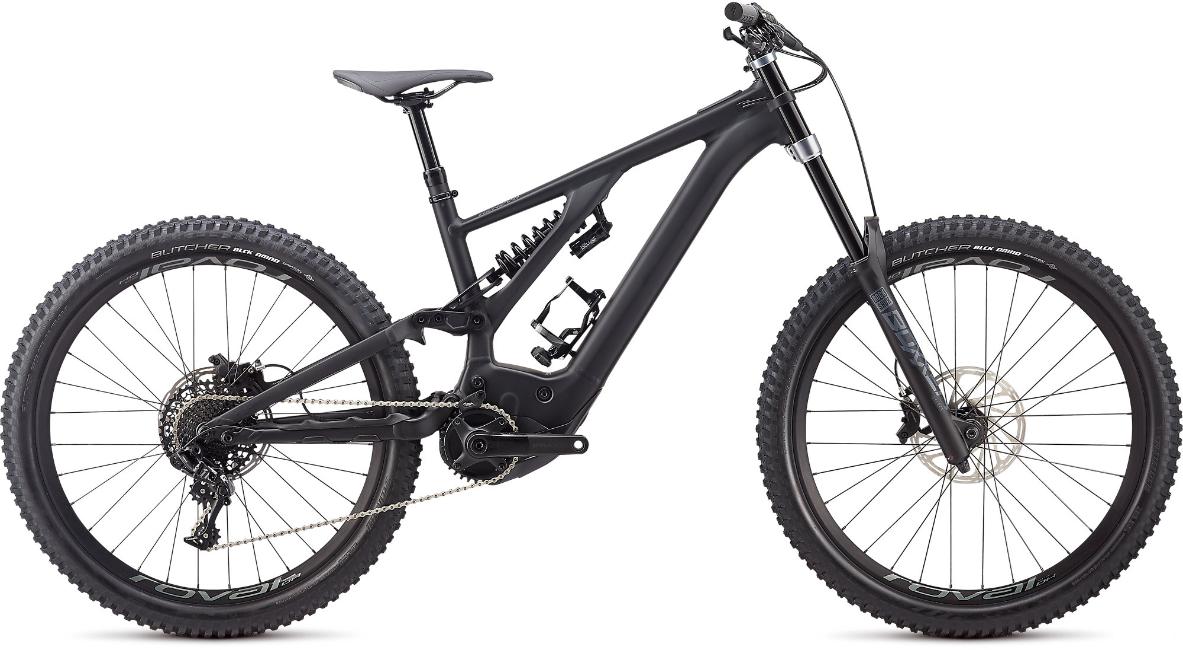
Photo Courtesy: Specialized Kenevo
| Model Name | Weight | Range |
| Specialized Kenevo Expert | 53 lbs (24 kg) | 150 miles (240 km) |
| Samedi 27 Wide 6 | 57 lbs (25 kg) | 90 miles (144 km) |
| Orbea WILD FS M-LTD | 50 lbs (22 kg) | 110 miles (177 km) |
Mountain bikes are designed for off-road trails and rough roads. They have upright, flat handlebars that require a bent or slouched posture to ride correctly. This structure helps you keep your balance when your tires hit bumpy terrain.
Despite its use for uneven ground, mountain bikes tend to have low gear ranges, with what few it has designed for pedaling up steep trails. Most mountain bikes come with some type of shock absorbers or suspension. Front suspension only-bikes are called hardtails, and both front and rear suspension bikes are called full-suspension or duallies.
If you happen to find a mountain bike without suspension, these are called rigid-bikes. It’s not a good idea to purchase a rigid mountain e-bike unless you want to feel every aspect of the road. A lack of suspension will cause an uncomfortable riding experience.
A mountain e-bike is a multi-purpose vehicle because it can be outfitted for use as a commuting or touring bike. However, they wouldn’t be as efficient or light enough to act solely as a commute or touring bike, but they are perfect for casual riding in a pinch.
Fat bikes are included in the mountain e-bike category. Although some mountain bikes are wide enough to fit fat tires, others are not. For adventurers who also want to bike in the snow, pick a fat bike because the tires have enough traction to handle ice and snow.
Riding range is vital for all mountain e-bikes because you’re likely riding in off-road areas that may not have access to refueling stations. Also, ensure the e-bike’s frame is compatible with your height and size, so you aren’t hurting your back while crouching. Keep in mind that e-mountain bikes can be really pricey, so be sure you want this model long-term.
Hybrid E-Bikes
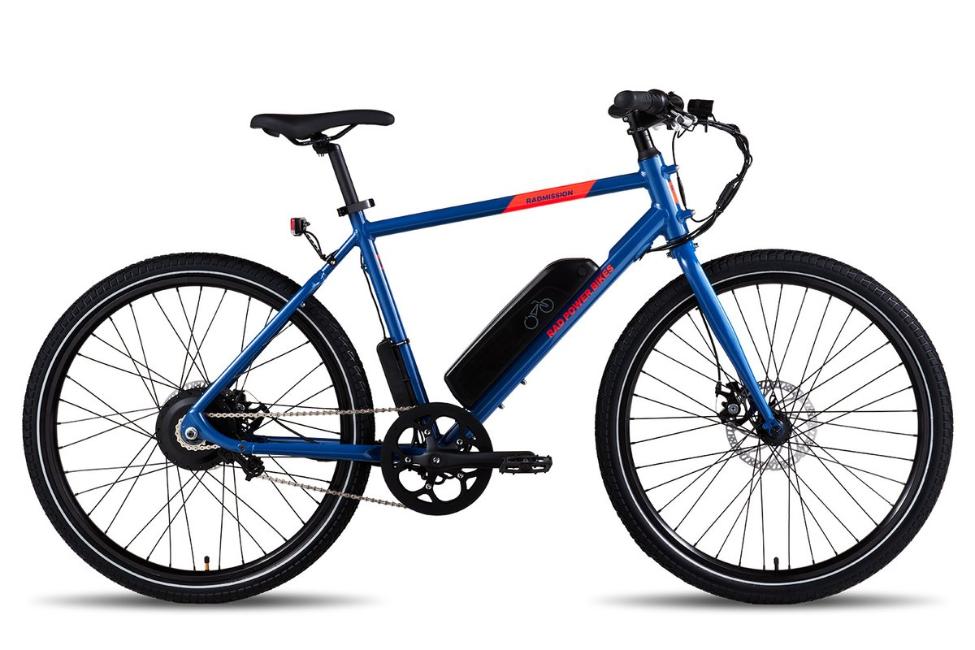
Photo Courtesy: Rad Power
| Model Name | Weight | Range |
| DOST Drop | 64.6 lbs (29 kg) | 120 miles (193 Km) |
| RadMission 1 | 50 lbs (22 kg) | 45 miles (72 km) |
| SONSORS Smart Step | 65 lbs (29 kg) | 40 miles (64 km) |
Hybrid e-bikes were created to provide the advantages of both mountain bikes and road bikes in one complete package. They typically have upright handlebars and padded seats for a more relaxed riding position and a straight/slightly bent posture.
Best for casual riding on bike paths and around the neighborhood, if you’re commuting for short distances for errands, hybrid e-bikes are a great option. They function adequately for paved roads, although they aren’t as efficient or lightweight as road bikes.
Where hybrid e-bikes shine are on unpaved or paved bike trails, but they won’t be adequate enough for off-roading like a mountain bike is. Although the tires will provide a smooth ride on pavement, their semi-smooth, medium-width treads don’t have enough grip or shock absorption or cushion for practically anything else.
If a hybrid bike has suspension, you’ll only find it in the front to smooth out small bumps. However, rigid suspension (or lack there-of) is more common. They used to be called cross bikes, but this was changed to avoid confusion with cyclocross bikes.
Hybrid e-bikes are a ‘jack-of-all-trades and a master of none.’ Someone who is looking for the benefits of most e-bikes may find a hybrid model appealing. Mostly focus on the range and battery charge time because you’ll likely use a hybrid for commuting.
Since commuting will be your ultimate goal, safety should be another focus. Check the price and the warranty to ensure dings and scratches are covered, because you’ll likely see some wear and tear during road-biking. Spend only for a model that will fulfill your needs, and only upgrade to something like a mountain or cruiser if you need an e-bike for a specialty purpose.
City E-Bikes

Photo Courtesy: Magnum
| Model Name | Weight | Range |
| Magnum Ui6 | 60 lbs (27 kg) | 60 miles (100km) |
| CUBE Elly Cruise Hybrid 400 | 55 lbs (25 kg) | 55 miles (88 km) |
| OHM Quest | 53 lbs (24 kg) | 75 miles (120 km) |
Although bicycle enthusiasts agree that a ‘city’ category exists, there aren’t bikes specifically made in this category. Instead, it acts as a descriptive term. City bikes are often called ‘urban’ or ‘commuter’ bikes as they are also used for commuting or riding in the city.
City bikes usually have the characteristics of both the cruiser and hybrid bike so, they typically have the upright riding position of a cruiser, but the wheel size of a hybrid. A city bike may also have fenders, chain guards, and a skirt or rearguard to make it easier to ride in regular clothing.
For easier maintenance and use, city e-bikes often have internally-geared read hubs and a built-in generator and lights for safer night riding. City e-bikes are sometimes called ‘Dutch bikes” because they resemble bikes used in European cities.
Urban riding doesn’t get any better than city e-bikes, because they’re functional, stylish, and are often a crowd favorite as they cater to casual riders. Any city with a well-designed bike lane will welcome the city e-bikes as they’re fast and small enough to zip through traffic.
The most crucial aspect of city e-bikes is comfort, which is a given for all e-bikes in this category. You also need adequate range, secure handling, and safety above all else since you’ll be riding on mostly paved roads.
If you decide the city e-bike is right for you, keep in mind that there’s a lot of competition in this sphere so you may feel overwhelmed by choice. Above all else, keep an eye on the price compared with its features because you can find many cost-effective and fantastic models.
Road E-Bikes
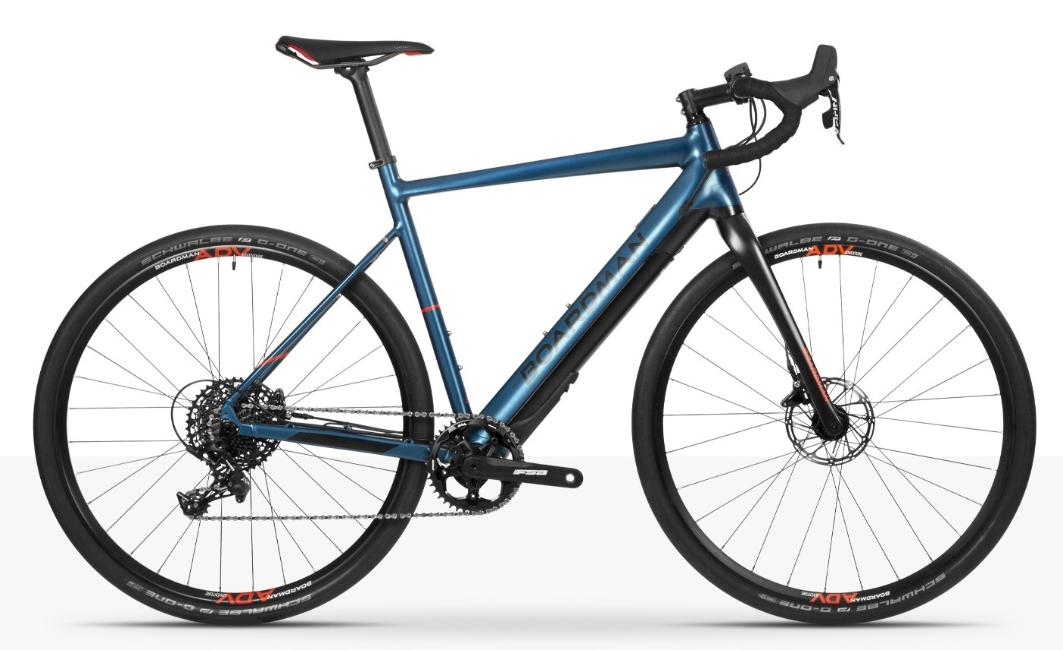
Photo Courtesy: Boardman
| Model Name | Weight | Range |
| Gtech eBike Sport | 35 lbs (16 kgs) | 30 miles (48 km) |
| Boardman ADV 8.9E | 10 lbs (4.6 kgs) | 55 miles (90 km) |
| Coboc One Soho | 30 lbs (13.7 kgs) | 50 miles (80 km) |
As the name suggests, road e-bikes are designed for smooth, paved roads. Their tires are skinny, high, and meant for fast riding. The drop handlebars can make riding a bit uncomfortable, so you need to master a bend or slouched position.
The purpose of the dropped handlebars is to make the rider more aerodynamic, so you achieve faster speeds without the wind slamming against your body and creating a wall that could slide you back. Instead, the wind will pass over your back.
Since road e-bikes are great for paved trails, they fail to produce a comfortable riding experience for unpaved or unstable trails. Don’t use these models for anything but racing or fast commuting, because the shocks and tires will not protect you against bumpy terrain.
Most road bikes aren’t suitable for carrying heavy loads, so they are not ideal for touring or commuting – just short rides with a backpack or long races. Since most e-bikes use GPS technology to calculate riding range, tech lovers will fit right in with the road e-bike crowd.
Road e-bikes a specifically for specialty riders that want to experience one type of bike riding. Since marathons are likely your thing, find an e-bike with a high capacity battery and motor because they both affect your riding experience more than any other criteria.
Some features, like staying comfortable long-term, will be more relevant if you plan to ride for an hour or longer per day. Weight and safety should also be a contributing factor, as well as the price and how that ties to your requirements.
Cyclocross/Gravel E-Bikes
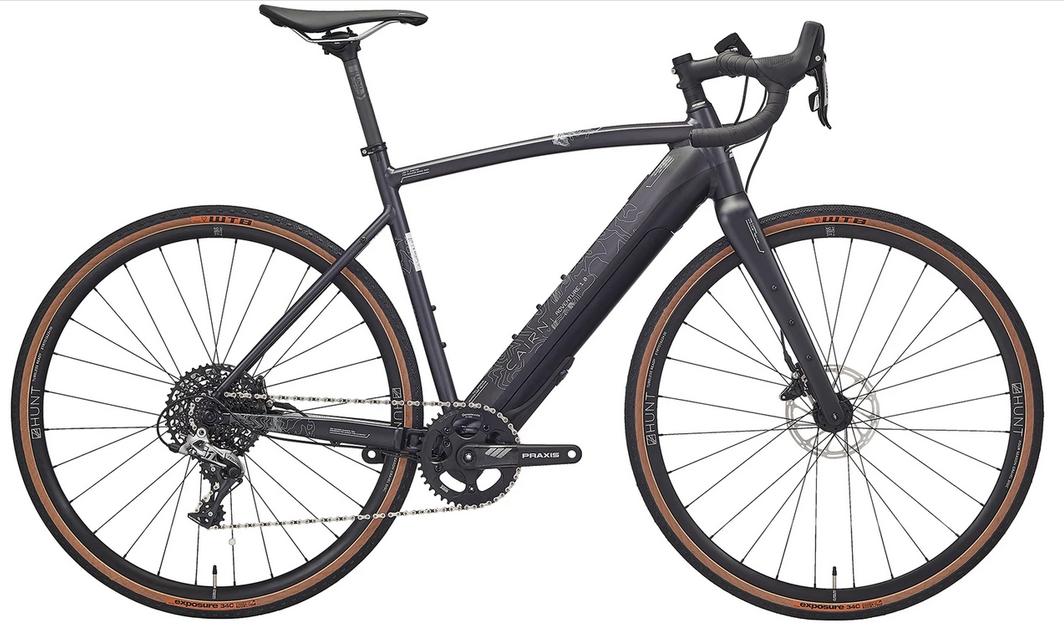
Photo Courtesy: Cairn Cycles
| Model Name | Weight | Range |
| BULLS GRINDER EVO | 53 lbs (24 kg) | 85 miles (135 km) |
| Cairn E-Adventure 1.0 | 32 lbs (14 kg) | 56 miles (90 km) |
| Yamaha Wabash | 42 lbs (19 kg) | 75 miles (120 km) |
Gravel or cyclocross e-bikes are a specialty type that is designed for racing on a mixed-surface course. Unlike road bikes, which can only ride on paved roads, the cyclocross model can ride on combination pavements, gravel, unpaved trails, and grass.
Cyclocross e-bikes have dropped handlebars like typical road bikes for less wind-resistance while riding, but the wheels are wider for better off-road traction. Gravel e-bikes also have a different style of brakes (usually disc brakes) to help prevent mud buildup on the frame.
You’ve probably heard of the term ‘cross bikes’ or ‘cx bikes’ in reference to road bikes because both the road bike and cyclocross models are confused for each other. Always check the tire width to be sure you’re picking the right model for your needs.
Keep in mind that gravel e-bikes came late in the e-bike game, which means you won’t have as many options in regards to price. For this reason, you may pick a mountain e-bike instead, but a cyclocross e-bike is actually cheaper than most high-end mountain bikes.
As for specs, you should concentrate more on your purpose for buying a gravel e-bike type. For racers, you should focus on the motor with enough power to scale steep inclines and travel through rough terrain. For casual riders, you won’t need to worry about the motor. Instead, focus on the battery and its charge time for longer commutes.
You’ll likely find a gravel e-bike for a reasonable price, but if you find that the price is similar to a mountain e-bike, just opt for one instead. Otherwise, try to find a balance of features (terrain, riding habits, and battery) for a better riding experience.
Cargo E-Bikes

Photo Courtesy: RadPower Bikes
| Model Name | Weight + Load Capacity | Range |
| RadWagon 4 | 60 lbs (27 kg) + 350 lbs (158 kg) | 45 miles (72 km) |
| Urban Arrow Shorty | 55 lbs (25 kg) + 400 lbs (181 kg) | 60 miles (96 km) |
| Tern Bicycles GSD S00 | 71 lbs (32 kg) + 440 lbs (200 kg) | 124 (200 km) |
For anyone who needs to travel long distances and carry a heavy load or a passenger, a cargo e-bike is perfect for you. We often don’t realize how much fuel it takes to carry more than one person, but you can cut an e-bikes range by more than half if you move too much weight.
Cargo e-bikes are also useful for the added stability of an often included extra tire. For this reason, they’re an excellent alternative to a motor-run tricycle or cars because of the added load capacity and the coolness factor. It’s often implied that tricycles are intended for kids.
This e-bike model often has a raised seat, flat handlebars, a large cargo basket in the front or back, and a large wheel in the front and a small tiny wheel in the back. Cargo e-bikes are more for functionally and utility, so if you want something that can go fast, get a smaller container in the front.
Should you opt for this model of e-bike to help you haul a wide variety of heavy things or averaged weighted people, but be careful when you’re shopping for one. Always prioritize the battery and motor, because if both of these don’t work in tandem, you’re not going to go far on a single charge.
Unfortunately, cargo e-bikes are some of the most expensive models available, especially if you want to carry loads of 400lbs or more. Be sure to factor in the bike’s weight before purchasing it; otherwise, you may miscalculate the load capacity and won’t be able to hold as much as you expect.
Adding more weight to a cargo e-bike than the manufacturer recommends could prematurely damage the motor and battery, or cause the e-bike to slow down. At that point, your e-bike won’t perform as well, which defeats the purpose of carrying more cargo.
Commuter E-Bikes
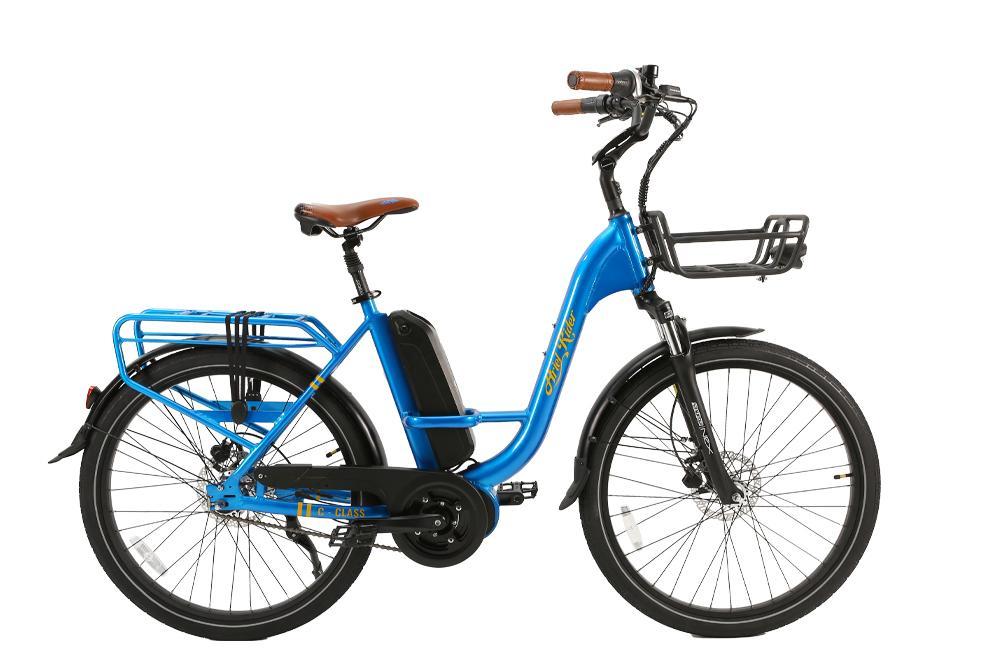
Photo Courtesy: Ariel Rider
| Model Name | Weight | Range |
| Ariel Rider C-Class | 62 lbs (28 kg) | 65 miles (104 km) |
| Trek Verve + 2 | 51 lbs (23 kg) | 82 miles (130 km) |
| RadCity 4 | 56 lbs (25 kg) | 44 miles (72 km) |
Most e-bikes are capable of getting the job done for short commutes, but a ‘commuter e-bike’ is in its own class because commuting is one of the most common e-bike uses. If you want a no-nonsense e-bike that gets you from point A to point B as comfortably as possible, choose a commuter bicycle.
A folding, city, and cruiser type could supplement for a commuter, but commuters tend to be more cost-effective because they don’t come with techy features that could jack up the price. Some city bikes often overlap with commuting types.
Since commuters often look and act like city models, you’ll find that the upright riding position is shared as it’s the most comfortable. Commuters also have larger, more shock absorbent wheels to protect against cobblestone or cracked sidewalks.
Comfort will be the most crucial feature of these models. Commuters are for daily bike rides, so ease of use is necessary. You shouldn’t ignore riding range or motor assist either because they need to fit your terrain and riding requirements.
Don’t overlook safety features, because you’ll be bobbing and weaving through traffic or pedestrians daily. Since commuters aren’t big on bonus features, you may need to pay a premium for GPS or display. If you want these features, keep in mind that many e-bike displays are purchasable after buying your e-bike.
Foldable E-Bikes

Photo Courtesy: Rad Power
| Model Name | Weight | Range |
| RadMini 4 | 67 lbs (30 kg) | 45 miles (72 km) |
| Gocycle GS | 49 lbs (22 kg) | 45 miles (72 km) |
| Swagtron EB7 | 48 lbs (21 kg) | 15.5 miles (24 km) |
Foldable e-bikes are bicycles that fold, usually in half, and are ideal for anyone who needs to travel with their e-bike. Some commutes take longer than 25 minutes and may require the rider to hop on a subway, bus, or train. Bringing along a foldable e-bike can help with that.
As an alternative, foldable e-bikes are perfect for anyone who wants to bike in a foreign country and wants to pack it on a flight, or if the rider lives in a small apartment will little storage space. You can also store these models under your desk once you get to work for safekeeping.
Most foldable e-bikes have smaller wheels, making them less efficient and harder to handle than a typical commuter. Think of a folding e-bike like a BMX, as they tend to be low to the ground, more compact, and require the rider to slouch.
One immediate concern for anyone who wants to use a foldable e-bike is its weight. Most e-bikes are more substantial because of the motor and battery, but if you aren’t capable of lugging around 50 lbs, find an e-bike that weighs 30 lbs or less for your comfort.
Riding range and motor power will be necessary, but it’s unlikely you’ll find a model capable of a lot of power or range that exceeds 44 miles (72 km) unless you want to pay a hefty price for it. Also, look at the motor size on the bike once folded, because it may jut out too much.
Expect to pay more than your average commuter. The technology required to make an e-bike foldable, light, and capable enough to carry a decent load capacity is always expensive. Folding e-bikes tend to be more economical than other types of electric bikes.
Are you an e-bike enthusiast?
Are you interested in many other articles, like this one, that gives in-depth information about different e-bike models?
Browse our site for more information on the best electric bikes and scooters that can make your commute more stylish and fun.
Before you go, leave a comment on your favorite class or model of e-bike or read one of our other articles about the history of bicycles and e-bikes.
The post Which Electric Bike to Buy? Deciding on the Right e-Bike For You appeared first on eRide Guides.
]]>The post Electric Bikes for Beginners: Everything you Need to Know Before you Buy! appeared first on eRide Guides.
]]>Due to these advancements, it’s not uncommon to see e-bikes existing with traditional, human-powered bicycles.
Dissecting an electric bicycle doesn’t have to be complicated. In fact, they’re very similar to the first bicycle you used when you were a child. With an added motor, battery, throttle, and drivetrain, you can exceed speeds of 28 mph (45 km/h) without breaking a sweat.
This article will act as an introduction to anyone interested in an electric bike. But first, we need to determine what an e-bike is before discussing its components, laws, maintenance, and more.
What is an Electric Bike?
Let’s look at what an electric bike is by comparing it to a traditional human-powered bicycle. To put it simply, an electric bike is a regular bike with an electrical drive system. This consists of a battery, motor, a way to integrate the motor’s power in the drive train, and a way to control it.
The Propella 7-Speed E-Bike has all the components of a traditional e-bike:

Photo Courtesy: Propella
- Purple Circle: The battery that powers the motor sits underneath the passenger bar.
- Red Circle: The throttle, which controls the power, is similar to a motorcycle handle.
- Orange Circle: Mid-drive motor helps to propel the e-bike forward.
- Green Circle: The drivetrain integrates the power located in the rear wheel.
Without these four critical components, the e-bike becomes a human-powered bicycle. Once you remove these components, an e-bike can become a bicycle as long as there are pedals to move the chain and gears to rotate the wheels.
What is the Difference Between an E-Bike and a Motorcycle?
Although a motorcycle and e-bike look similar from a glance, they are entirely different from each other. The most significant difference is what powers a motorcycle. Electric motorcycles exist, but a gas-powered motorbike has unlimited range, is faster, and has room for an extra passenger.
As a disadvantage, motorcycles are very loud, expensive, and take up a lot of space. They’re also more costly to maintain.
An e-bike costs less, even when compared to the initial price of the purchase, battery replacements, and maintenance. They’re quiet, are parkable virtually anywhere, and benefit your physical fitness.
The only thing you miss out on is the motorcycles’ cool’ factor. But, like how cigarettes have come and gone out of style, so will gas-powered motorbikes.
If you prefer a compact, lightweight mode of transportation that doesn’t require insurance or registration, get an e-bike. However, if you want something more road-worthy with a better suspension and visibility, purchase a motorcycle instead.
What is the Difference Between an E-Bike and a Moped?
An electric scooter (or moped) is a purpose-built machine with electric propulsion. Mopeds look similar to gas scooters with a platform for the user’s feet and a step-through-style base. Some of these scooters are classified as “power-assisted bicycles.”
Despite this classification, mopeds are very different from e-bikes. First, mopeds do not have pedals, so you can’t use them as an exercise apparatus. Mopeds also require a driver’s license in the U.S., insurance, and registration, whereas e-bikes do not.
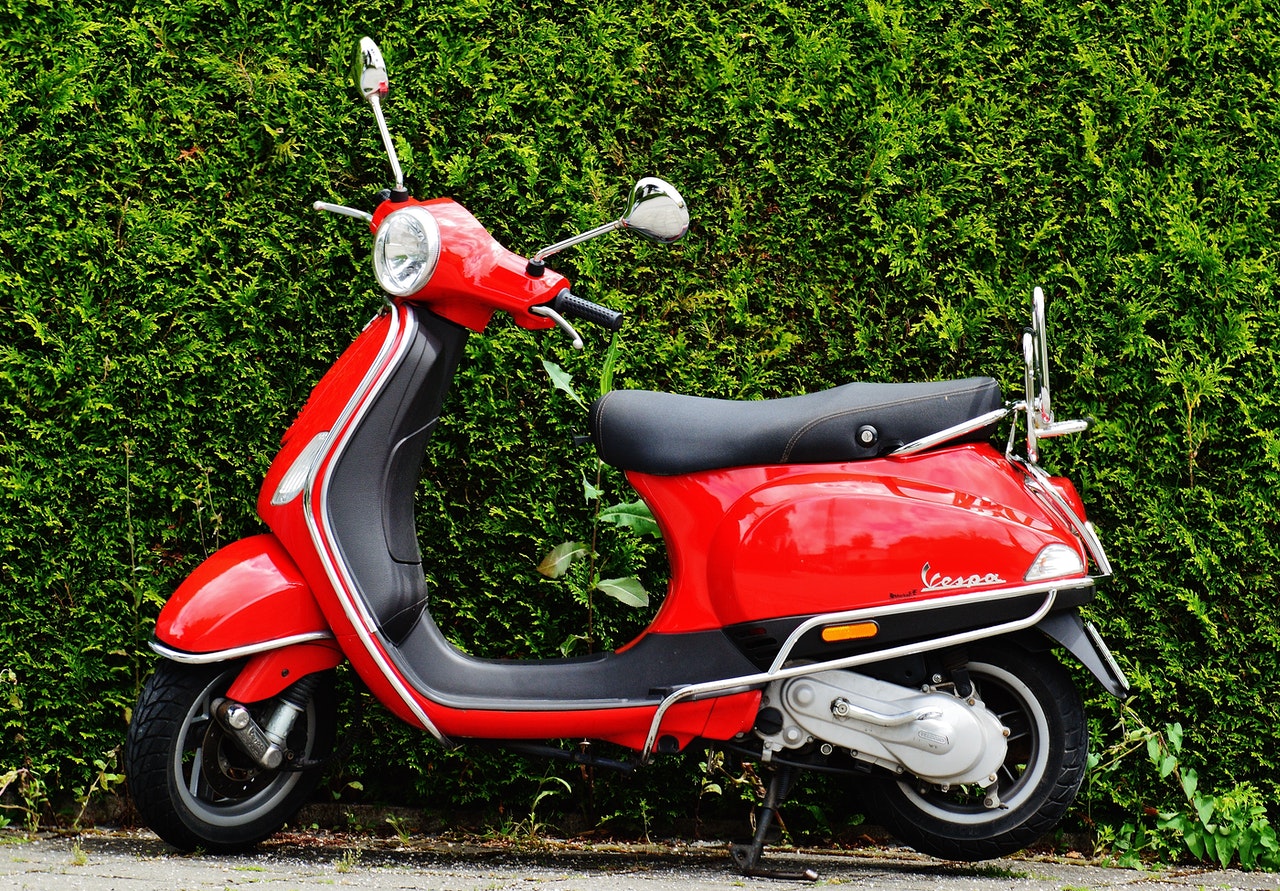
Photo Courtesy: PixaBay/Pexel
Mopeds have a limit to where they can operate. Although they can travel on the street or within bike lanes, they aren’t allowed on sidewalks and can’t park in bicycle areas. An electric bike is still considered a bicycle and can go wherever a human-powered bike can go.
Finally, a moped cannot travel anywhere but within a city. An e-bike can go up a mountain with just the motor alone. If you do want a moped, they can reach higher speeds than a typical e-bike at 30 mph (48 km/h) where an e-bike can only legally cap out at 28 mph (45 km/h).
How do E-Bikes Work?
Mid-Drive
An electric-mid-drive motor is the main component that makes riding an e-bike effortless. This motor type has more torque and higher performance than a traditional hub motor. Since it drives the crank and not the wheel, it takes advantage of the guards to amplify the bike’s power.
Mid-drives are often close to the ground to improve the handling of the e-bike. The lower the mid-drive, the better your center of gravity, as it distributes the weight better throughout the bike.
Battery
You need the battery to operate an e-bike; otherwise, it becomes a regular bike! A typical battery can provide 40 miles (64 km) of riding, but the smaller, more compact designs may only take you 20 miles. You can remove them easily to clean or charge.
Drivetrain
A drivetrain delivers power to the driving wheels and converts torque and speed via the gears. Some drivetrains let you turn the resistance up or down so you can comfortably ride up steep mountains. The dial is typically located around the gears next to the drivetrain.
Throttle
You’ve likely seen a throttle on a motorcycle, and they serve the exact same purpose – it kicks on the motor and lets you control the e-bikes speed. When you turn the throttle forward, the e-bike will drive. The speed of which the e-bike goes is determined by how far forward you twist the throttle.
Not all e-bikes are made the same, but they all have these four components. Most electric bicycles also come with disc brakes, suspension, and pedals.
How do you Ride an E-bike?

Photo Courtesy: Snapwire/Pexel
Some e-bikes have pedals that let you ride like a human-powered bicycle but with the added assistance of a motor to propel you forward.
However, some e-bikes don’t come with pedals. Foldable or small electric bikes tend not to have a pedaling option. Instead, a user would have to place their feet on the spokes where the pedals would be and use the throttles to move forward.
Most e-bikes have either option so the rider can ride without any human component. This is great for office workers who want to arrive at the job without sweating. At the same time, that same office worker could get in some great cardio during their time-off by using the pedals only and no throttle for assistance.
Common Features of an E-Bike
Besides the motor, throttle, drivetrain, and battery, many other features come with your typical e-bike.
Folding
An excellent folding electric bike can store securely within your home, in a car, or on public transport. If your commute requires a quick detour on the subway, or you live in a small apartment or a home without a garage – pick a folding bike.
Folding e-bikes tend to be lighter than traditional, non-folding types. Keep in mind that a great bicycle with a decent motor and battery will still weigh 40 or 50 pounds. Lugging it around will make you stronger!
Braking System
An electric braking system is universal for e-bikes, but when given a choice, always choose disc brakes over conventional types. Disc brakes offer greater stopping power, which is helpful for long descents or during wet weather. They’re also more precise because wheel lockup is less likely.
Electronic Panel
An electronic panel display isn’t necessary, but it can enhance your riding experience. Find one that displays power status, distance, headlights, PAS grades, speed, and error messages. An estimated battery level display can ensure you don’t run out of charge far away from home.
Range
The range of the battery depends on the type of riding you’re doing, so it’s challenging to list a range spec on an e-bike as a sale point. The manufacturer assumes you’ll use an e-bike on a flat sidewalk because you’ll have the most extended range on terrain with minimum effort.
To calculate the watt hours (range) of a battery pack, multiply the voltage by amp hours. A 36-volt 10-Ah battery pack has 360-watt hours (36 X 10 = 360). Each mile costs 20-watt hours on average. Therefore, a 360-watt hour pack will get you 18 miles on one charge.
Tires/Suspension
Suspension isn’t always a given on e-bikes, similar to how cost-effective bicycles don’t have adequate shocks. Instead, e-bike manufacturers will install thicker, more inflated tires to improve stability on bumpy roads or sidewalks.
Common Accessories for an E-Bike
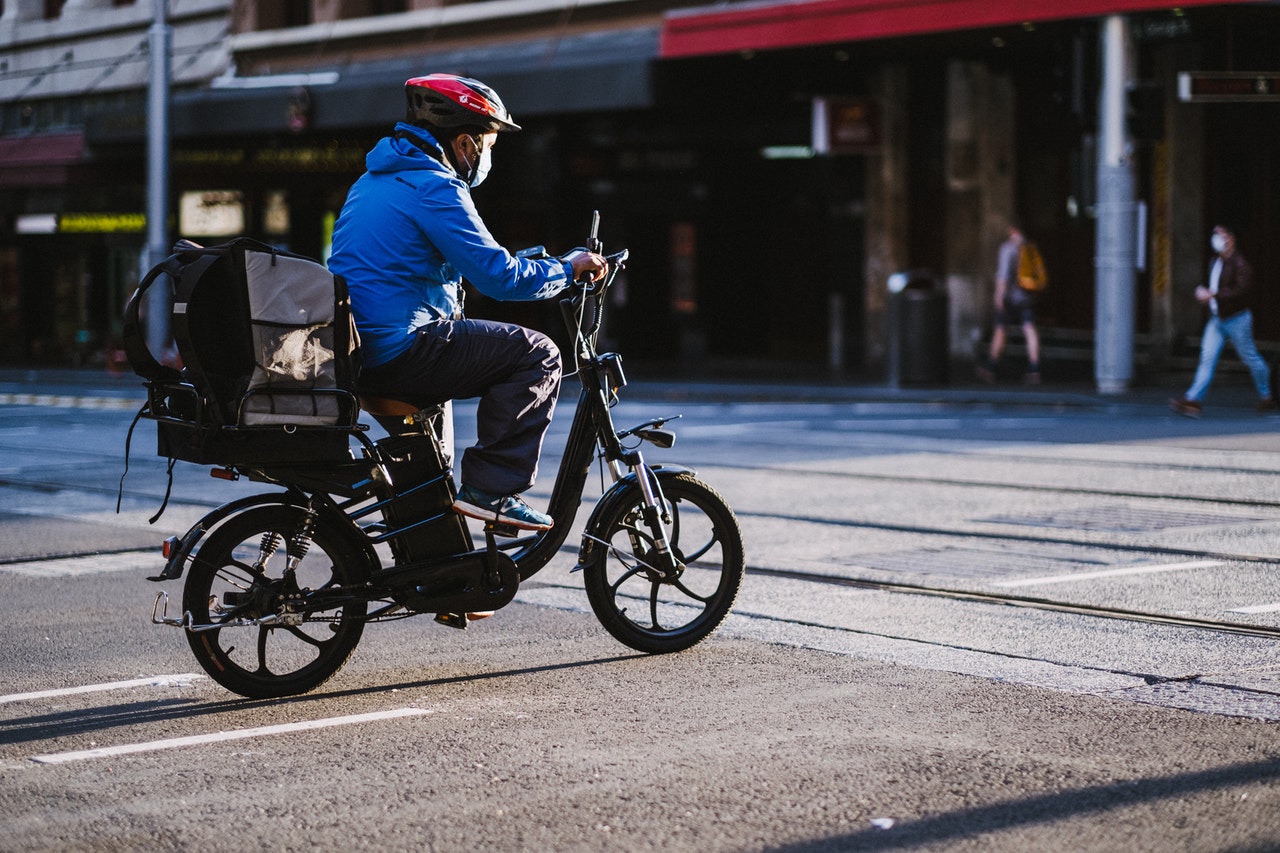
Photo Courtesy: Kate Trifo/Pexel
Are you thinking of adding a few accessories to your e-bike, so it stands out from the crowd?
Consider these items to improve your safety and the look and feel of your bike.
- Helmet: Safety is essential. Since e-bikes exceed 20 mph (32.19 km/h), a crash could be fatal. Use a DOT helmet made for motorcycle users to protect your noggin from falls.
- Side Mirrors: Most e-bikes don’t come with mirrors, but they’re vital to your safety. Equip them to the end of your handlebars on each side for maximum visibility.
- Lights: If you ride at night, you need headlights for safety. Pick up taillights too so vehicles can see you in the dark on country roads or alleyways.
- Basket: You could use a backpack, but if you don’t want to get your back sweaty put a front basket that’s deep enough to store three bags of groceries.
- Suspension Seatpost: Great suspension is only found on expensive e-bikes. For anything other than high end, get a suspension seat for a smoother ride.
We also recommend grips for your handlebars, fenders to protect your chains, and pop-off pedals so your e-bike can fit easier in cars or public transit. Always buy bike tools for standard maintenance and repair jobs.
Growing Popularity of E-Bikes
Every year the popularity of e-bikes is increasing by more than 60% on average worldwide. In 2019, e-bike sales rose 73% at specialty shops. The more popular models are pedal-assisted, move at 20 mph (32.19 km/h), and fold.
E-bikes are the fastest-growing segment in the cycling market, with over $100 million in sales in the United States as of 2019.
“E-bikes are making recreation and transportation easier in cities and urban locations across the United States,” said Taldi Harrison, the government and community affairs manager for REI. “E-bikes are a dependable option for people of all backgrounds and help make getting outside-accessible for all.”
About half of all e-bikes sold are bought by people who never considered themselves cyclists, or who haven’t ridden a bike in years. E-bikes broaden the audience for who can use motorized transportation without the setback of a clunky or expensive car.
However, there is a downside to this rapid popularity spike. There are virtually no laws in place to regulate the use of motorized bicycles.
Laws and Regulations
The US Laws and the Lack of Regulation
At the federal level, the U.S. Consumer Product Safety Commission regulates e-bikes for product safety for manufacturing at the first sale. Without clear guidelines, many states adopted outdated rules governing e-bikes that treat them as an extension to human-powered bikes or motorcycles.
Some have no regulation what-so-ever, so individual states tend to suggest a 20 mph (32 km/h) max speed. This loose approach has led to multiple injuries that were easily avoidable. From 2000 to 2017, 245 million injuries occurred from electric scooters or bicycles.
The Rapid Need for Legalization of the 3-Class System
Since 2014, the national bicycle advocacy group PeopleForBikes helped over 30 states pass standardized regulation for e-bikes using the 3-Class System. This model legislation defines three standard classes of e-bikes based on wattage, speed, and operation.
Class 1 and Class 2 are usually allowed where pedal bikes are allowed, but Class 3 bikes are typically reserved for road use only. In Europe, a cyclist must place a highly visible sticker on the frame to indicate an e-bike’s Class.
In 2015, California was the first state to adopt the 3-Class System, but since then, 26 states now define e-bikes in a Three Class structure. The graphic below outlines where states have proper legislation, which are acceptable and problematic and need work.

Photo Courtesy: Katrina Dent
Legislated states use the 3-Class System. Acceptable states have no age limit, no licensing registration, and e-bikes are treated as bicycles. Finally, problematic states treat e-bikes as motor vehicles and have confusing laws and practices that aren’t found in state law.
Different Types and Categories
Most countries follow the 3-Class system to dictate the difference between the different types and categories of e-bikes. These classes are further broken down into terrain subclasses determined by the motor and battery application and use.
The 3-Class/Type System
Here is a breakdown on which e-bikes classify Class 1, Class 2, and Class 3 under the legislation.
- Class 1: Assists pedaling but not your throttle, these e-bikes are passive and are allowed to function on bike paths. Pedal-assist only (absolutely no throttle), and have a maximum assisted speed of 20 mph (32.19 km/h).
- Class 2: Known as low-speed throttle-assisted e-bikes. These e-bikes have motors that proper the cyclist without pedaling. The rider cannot exceed more than 20 mph (32.19 km/h) like Class 1, except Class 2 e-bikes must be throttle-assisted.
- Class 3: Known as speed pedal-assisted electric bikes and assist the rider if they’re pedaling. Cannot have a throttle. Class 3 e-bikes can have a maximum assisted speed of 28 mph (45 km/h). However, the U.S. only allows bikes on the road that have a maximum of 20 mph (32.19 km/h).
All e-bikes, no matter the Class, limit the motor’s power to 1 horsepower (750W).
Terrain Classes
E-bikes are separated between two types of terrain: rough trails and leisure. Most e-bikes are geared towards leisure activity because consumers use these to go to and from work. Mountain bikes are useful for rural communities where cars are expensive or inaccessible.
Rough Trails:
Similar to a traditional bike, e-bikes are capable of cycling up steep hills for an extended period with the proper battery and motor (750w minimum preferred). These bikes are available at hardtails or full suspension. The full suspension is better for rougher ground.
Leisure and City:
All e-bikes can function spectacularly on flat land or in a cityscape because they were initially designed for this purpose. To get the most out of the battery and motor, calculate your weight against the wattage of the battery. For example, a 110-pound woman can use a 250w battery to its fullest extent, while a 150-pound woman should use a 500w or more for better results.
Some companies have a hybrid category of leisure and rough, but it’s better to buy a bike specifically for its purpose because it will perform better. If you find that you share your time between mountain biking and leisure, then purchase a hybrid. Otherwise, pick one or the other.
Speed and Pedaling
The speed of an e-bike depends on the Class number, battery, and motor. Most e-bikes range from 20 mph (32.19 km/h) to 28 mph (45 km/h). Anything faster than that is illegal in multiple U.S. states. Use the below chart to determine max speed vs. batter and motor.
| Battery + Motor (Flat Terrain 165 lbs Male) | Max Speed | Average E-Bike Cost | Average Charge Time |
| 250w | 20 mph (32.19 km/h) | $500 – $1000 | 20 minutes |
| 500w | 25 mph (40.23 km/h) | $750 – $1250 | 40 minutes |
| 750w | 28 mph (45 km/h) | $750 – $1500 | 60 minutes |
| 1000w | 35 mph (56.32 km/h) | $1000 – $1500 | 80 minutes |
| 1500w | 40 mph (64 km/h) | $1500 – $2000+ | 120 minutes |
* Green is within legal limits, red is considered illegal by many U.S. states
If the e-bike has a pedal assist, it’s possible to exceed your bike’s maximum speed as long as you remain pedaling. However, pedaling excessively could damage the motor if you’re consistently going above the max speed and using the throttle in tandem.
Safety Tips
Although e-bikes are a great way to get around, they still require attention to ensure your fun ride doesn’t become dangerous. Many electric bicycle safety tips apply to standard cycling, while others are specific to motorized vehicles.
- Wear A Helmet
- Use Headlights and Taillights
- Use a Horn or Bell to Warn Other Pedestrians
- >Don’t Ride Against Traffic
- Use Bike Lanes Where Possible
- Keep Tires Properly Inflated
- Practice Defensive Driving
- Use Your Mirrors
Above all, never ride drunk. Although bikes do not require a license to operate, you can still get seriously injured if you’re not 100% aware of your actions. It isn’t worth it. Fold your bike into a cab, if possible, or walk your bike home on the sidewalk.
Insurance
Insurance for e-bikes does exist, but it isn’t necessary to purchase in the United States. The policy cost depends on your coverage, but we recommend liability coverage to cover third party damages like property or medical expenses.
However, there are many things insurance won’t cover, like a stolen battery, manufacturer malfunctions, or theft of the entire bike.
Homeowners and renters insurance will not cover electric bicycles. Auto Insurance also won’t cover an e-bike (only other motorized vehicles like mopeds or motorcycles) because you don’t require a license to operate it. You will need to seek out third-party insurance coverage.
Average Lifespan
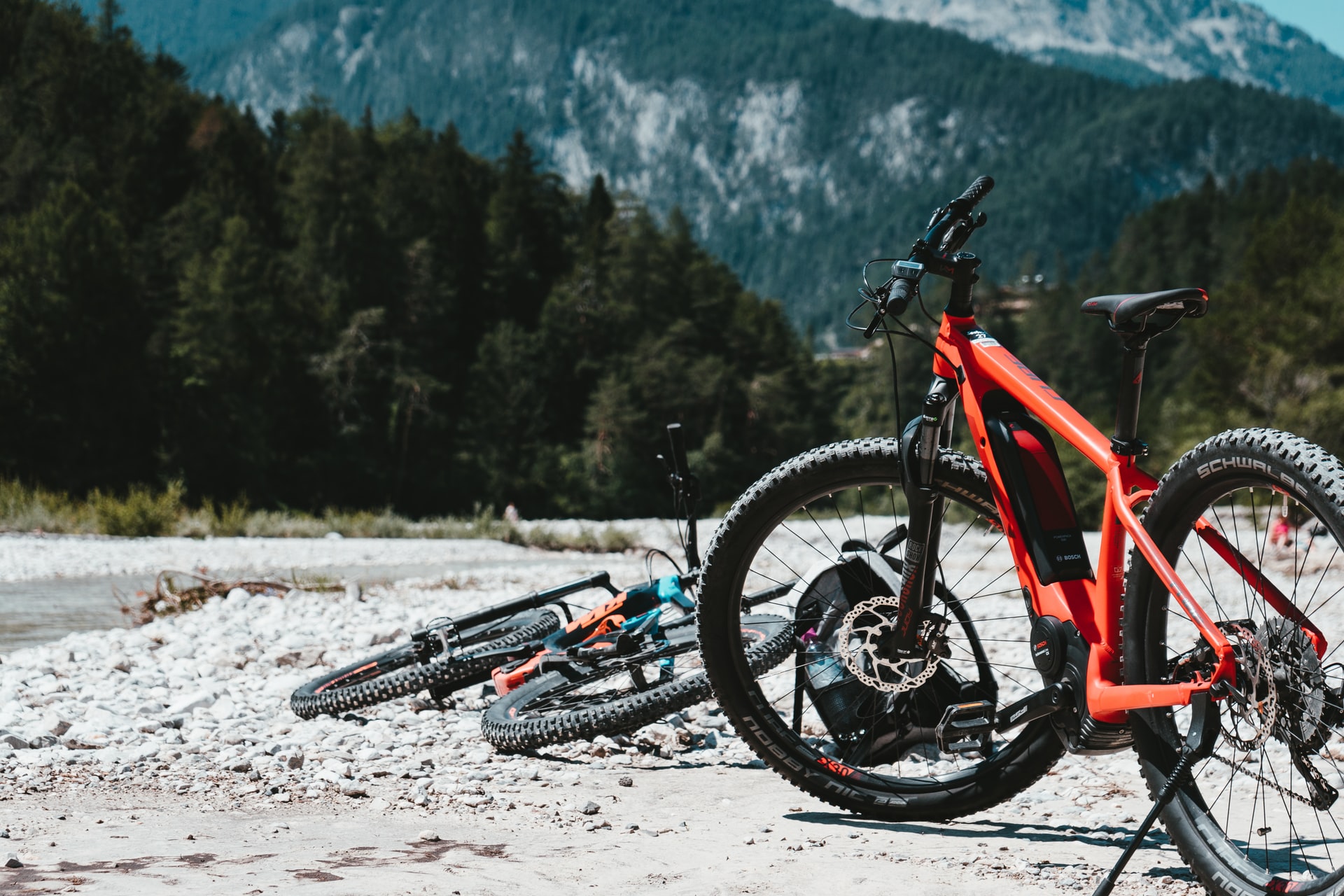
Photo Courtesy: Julian Hochgesang/Unsplash
A quality e-bike made of lithium-ion or lithium-polymer technology is usually capable of 1K full-charge-discharge cycles. However, most users don’t use their e-bike until it’s dead. Therefore, an average user will get three to five years out of one electric bike battery.
The average lifespan of your e-bike could diminish if you take poor care of the motor, battery, and drivetrain. Use these tips to extend the life of the electronic components on your e-bike.
Maintenance
Schedule A Weekly Cleaning: Regular cleaning to keep off the dirt, dust, and debris from getting into the engine should be your priority as an e-bike owner. It helps keep the mechanical parts functioning. However, never use a pressurized hose or stream of water because it could expose jetting liquid into the electrical system – causing it to malfunction.
Lubrication: Similar to a steel bicycle chain, the e-bike chains and gears need proper lubrication, or else it will rush, seize, or break. You should use a special cleaning solution specific for cleaning bike chains. For example, if you use WD-40, the oil will fly up onto your pants as you ride. Do this once a week if you bike often.
Tire Pressure: The tires’ sidewalls should inform you of the ideal pressure for that tire type. Check the pressure by using a pressure gauge – don’t just eyeball it because you risk too little traction or bloated tires. Inflate them properly for a smoother ride.
Check the Bolts: While you’re cleaning, check for any loose nuts, bolts, or screws. Use your fingers to check the tightness. If you can screw the bolts off with your fingers, they’re way too loose. Don’t tighten the bolts too much, or you won’t be able to get them off!
Battery: The most critical electrical piece on your e-bike is the battery, so treat it as such. Read the manufacturer’s instructions before changing it, or you could damage the battery or the bike. Know that battery replacement can be expensive, so take care of it by protecting it against rain, dirt, and debris.
Brakes: Check these every few weeks by pumping them at slow speeds. It’s essential to have effective brakes on any motorized vehicle. Otherwise, you could be in a severe accident. Brake pads are easy and cheap to replace if necessary.
Storage Tips: Always keep your e-bike in a cool, dry place away from any potential rain or harsh weather conditions. It’s better to keep it indoors, either in a garage or in your home. Keep the bike off the ground during the winter, so it’s less likely to get knocked or ruined.
Is an E-Bike a Good Investment?
Electric bikes make riding convenient and effortless. You may wonder if the point of getting a bike is for the exercise, but the real reason to use an e-bike is to get from point A to point B comfortably and inexpensively.
Although e-bikes will never wholly replace a regular bike or a car, it can eliminate the barriers that stop people riding, such as hills, distance, or health. You won’t have to worry if you’re strong enough, have enough endurance, or enough confidence to get back on the road.
If riding represents stress-reduction, freedom, better health, enjoyment, and free time, an e-bike will be a good investment for you, especially if you want to add a bit more exercise to your life and reduced car traffic.
Are you an e-bike enthusiast?
Are you interested in more in-depth articles on e-bikes? Stay on our website for more content.
Before you go, leave a comment about your thoughts on owning an e-bike, or read one of our other articles about the average electric bicycles top-speed.
The post Electric Bikes for Beginners: Everything you Need to Know Before you Buy! appeared first on eRide Guides.
]]>The post The History of Electric Bikes and the Bicycle appeared first on eRide Guides.
]]>A German baron named Karl Von Drais made the first significant development in 1817 – but the bicycle was mostly a clunky wooden prototype that could only be powered by legs kicking the ground.
To truly understand the relationship between the traditional bicycle and the electric bike, it’s essential to study the history of all pedelecs. Although e-bikes were a concept in the 1890s, it wasn’t until the 1990’s that batteries were light enough to power them.
Let’s look at the earliest unverified bicycle, the invention of what we know as a ‘bicycle’ and it’s many improvements.
Finally, we’ll look at the electric bike and its switch from a bulky clunky transportation device to the incredible piece of technology it is today.
The Unverified History of the Bicycle
Before 1817, many inventors sketched up the concept of a bicycle. To qualify a piece of technology as a ‘bicycle,’ it has to be a human transport device with two wheels that requires balancing by the rider.
A sketch done around 1500 AD attributed to Gian Giacomo Caprotti, a pupil of Leonardo da Cinci, was discovered in the modern era.
After some research by bicycle historian Hans-Erhard Lessing, it was determined to be a purposeful fraud.
However, philologist and lexicographer Prof. Augusto Marinoni said otherwise. When he was tasked to look through the transcription of Leonardo’s Codex Atlanticus (a twelve-volume collection of DiVinci’s drawings), he determined it was likely an accurate drawing (see drawing here).
Another unverified drawing comes from a mostly undocumented artist Comte de Sivrac who developed something called the célérifère (see here) in 1792.
It resembled a Hobby Horse, had a seat, two wheels, and handlebars that could turn the front wheel. The rider would push the célérifère by pushing it along with their legs and feet.
Current historians state that there is no proof that the two-wheel célérifère existed, although there were four-wheeler versions.
The design was misinterpreted by Louis Baudry de Saunier, a well-known French journalist in 1891 while doing a collum for bicycle history.
The Birth of the Bicycle: 1817 to 1819
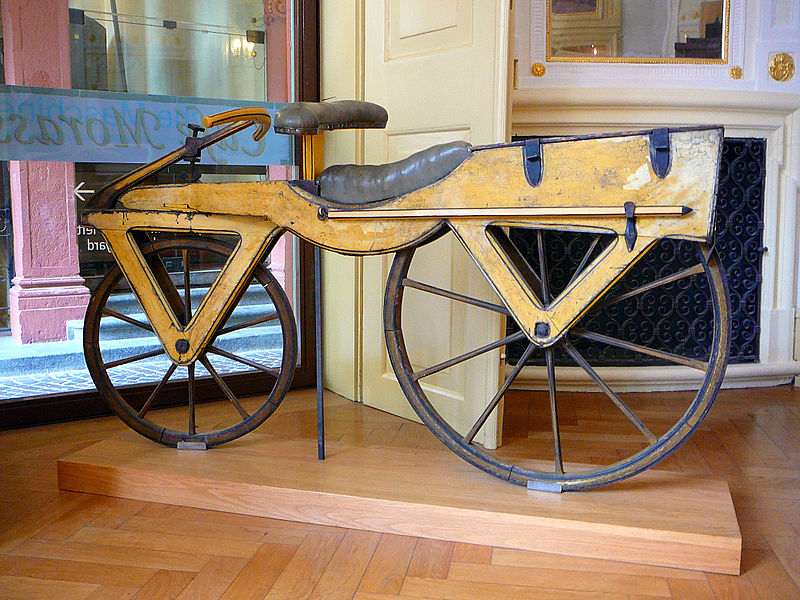
Photo Courtesy: Gun Powder Ma/Wikipedia
Baron Karl von Drais
The first bicycle belonged to Baron Karl von Drais, who acted as a civil servant to the Grand Duke of Baden. Called the Laufmaschine, Draisine, or draisienne, this wooden bicycle was created in 1817 and patented the next year.
It was the first commercially successful two-wheel, steerable, human-powered machine that was later re-branded as the velocipede and often called the dandy horse or hobby-horse. It was documented that Drais wanted a new type of vehicle to reduce the reliance on horses.
On Drais’s first ride from Mannheim, he covered 8 miles (13 km) in less than an hour.
Constructed mostly of wood, the Laufmaschine weighed 48 lbs and had wheel bearings, iron-shod wheels, brass bushings, and rear-wheel brakes.
Its popularity took off, but authorities soon limited its use because of the multiple accidents it caused. Still, many other inventors tried their hand at making new patented pedantic machines like the pedestrian curricle or the velocipede.
Denis Johnson
However, the name didn’t stick. It wasn’t until the modern era that the word “bicycle” became a familiar name.
Hobby horse was popular as it resembled the children’s toy, and the dandy horse was used as a cheeky way to make fun of the foppish English men that frequently rode them.
Denis Johnson’s invention in 1818 was more elegant because of its serpentine shape instead of the straight Drais model.
In 1819, the hobby-horse became the next big craze in London but was cut short when dandies noticed their boots getting worn down during riding.
Regardless, Drais’s velocipede provided the basis for all other bicycles to follow. Later, a French metalworker in 1863 created the rotary cranks and pedals to the front wheel hub, which ushered in the birth of the bicycle as we know today.
Scottish Two-Wheel Inventions: 1830s
One of the first mechanically propelled two-wheel vehicles belonged to inventor Kirkpatrick Macmillan, a Scottish blacksmith who made his invention in 1839. His nephew confirmed that his uncle developed a rear-wheel-drive design using mid-mounted riddles that connected with rods to a rear crank.
The Tretkurbelfahrrad by Philipp Moritz Fisher: 1850s
Another German was in the center of a new invention. Philipp Moritz Fischer used the draisine at a young age to travel to and from school.
He created the first bike with pedals (called the Tretkurbelfahrrad) in 1853, which didn’t require the user to propel themselves with their legs.
Boneshaker or Velocipede: 1860s

Photo Courtesy: Unknown author/Wikipedia
French inventors changed the design of the velocipede in 1863. It used rotary cranks and pedals mounted to the front wheel. It was difficult to steer, but it was possible to hit faster speeds due to the pedals positioning and the reduced weight of the metal frame.
These new additions made it possible to mass-produce the vehicle. Now, braking was possible due to the added metal components. In England, the velocipede earned the nickname “boneshaker” due to how it shook when riding on cobblestone rodes.
A patent made by Pierre Lallement means that the invention of pedals was given to him, although Fisher created pedals years earlier. Lallement’s patent drawing shows a machine that looks similar to Johnsons but with pedals and a rotary crank in 1866.
In the early 1860s, Pierre Michaux started producing parts for the velocipede on a large scale and created the Michaux company, which mass-produced bicycle parts. They dominated the industry for many years.
High-Wheel Bicycle: 1870s
The penny-farthing was the next big leap in bicycle innovation. It was high off the ground, contained one large wheel in the front and a small one in the back, and was capable of higher speeds and were primarily considered unsafe.
At this point, the bicycle was considered a high-class symbol. It was priced way out of the range of an average working-class worker until the 1890s, where the price decreased significantly due to the accessibility of parts.
Safety Bicycle: 1880s and 1890s
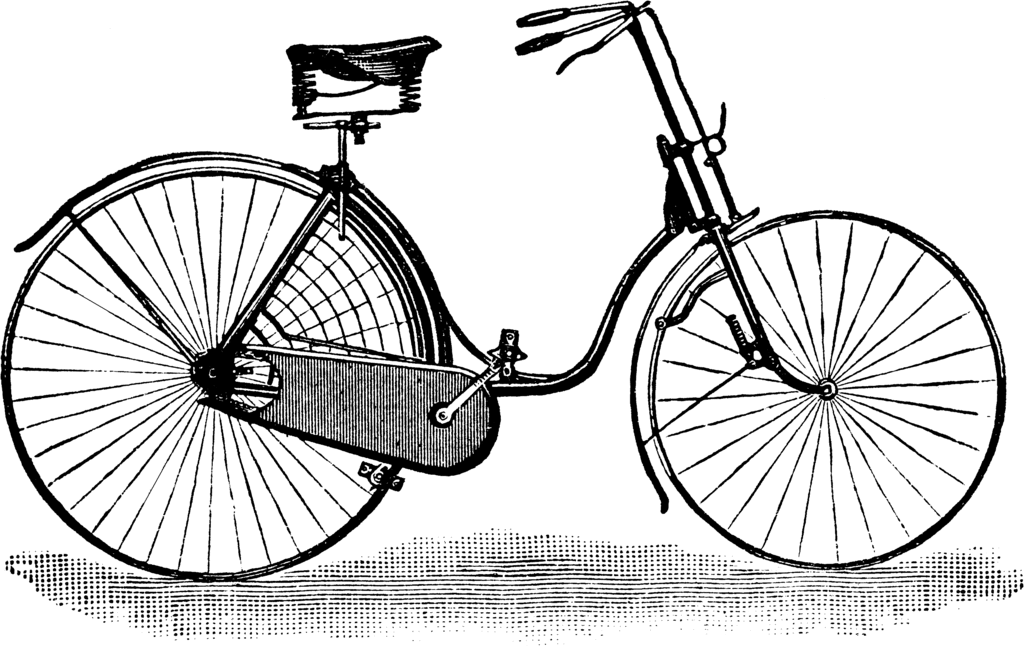
Photo Courtesy: Unknown author/Wikipedia
The safety bicycle is widely thought of as the most critical change in the history of the bike. It shifted the way others saw bicycling as a dangerous hobby to an everyday transportation tool that anyone of any age could enjoy.
Although there were still safety issues with the original safety bicycle of 1884 (as it was still too high off the ground), it added a chain-drive front wheel. Inventors later experimented with a rear-wheel chain drive.
John Kemp Starley produced the first successful safety bicycle called the ‘Rover’ in 1885 but wasn’t patented. It had a steerable front wheel with a large caster and equally sized wheels and a chain drive to the rear wheel.
The Rover was imitated countless times and wholly replaced the high-wheeler as it was easier to ride on paved streets and dirt roads. However, it wasn’t as comfortable as the high-wheelers because of the smaller wheel size and lack of suspension.
John Dunlop’s reinvention of the pneumatic bicycle tire helped create a smoother ride and made the complicated bicycle suspension obsolete. This also meant the diamond pattern became the most efficient design, which was later foldable after African American inventor Issac R Johnson lodged a patten for his design.
The chain drive improved speed and comfort, which allowed for a smooth, relaxed, and injury-free pedaling experience. Riders could easily steer around corners due to its lighter design and simple construction.
The Invention of the Electric Bicycle: 1890s
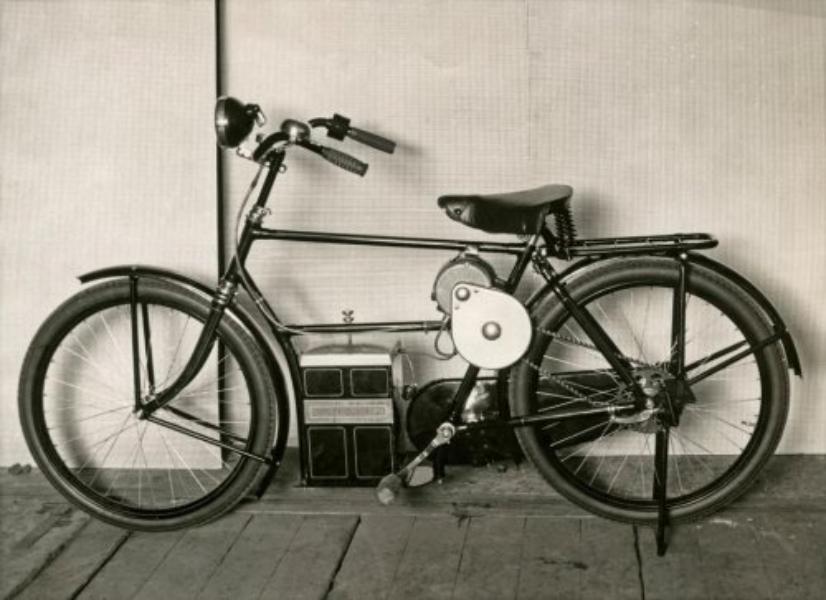
Photo Courtesy: GaHetNa (Nationaal Archief NL)/Wikipedia
Electric bikes were documented within various U.S. patents. In 1895, Ogden Bolton Jr. created a patent for the first battery-powered bicycle with a 6-pole brush-and-commutator direct current hub motor mounted at the rear wheel.
At the time, this electric bicycle had no gears, and the motor could draw up 100 amperes from a 10-volt battery. It was very clunky and barely moved. All human-powered bikes at the time could maintain faster speeds that this primitive e-bike.
In 1897, Hosea W. Libbey invented an electric bike that propelled by using a double electric motor. It was designed within the hub of the crankset axle. This was reinvented in the 1990s by Giant Lafree e-bikes.
1898 saw a rear-wheel-drive e-bike that used a driving belt, and 1899 depicted a roller wheel style electric bicycle. Until the 1960s, electric bike inventions remained stagnant because the batteries and frames were too clunky, and the battery lasted less than an hour.
The Last of the 19th Century: Roadsters
By the 1890s, the roadster was pattened and well documented. Its design included a step-through frame rather than the diamond shape that the gentleman’s model had. This made it easy for ladies to mount the bicycle with dresses and skirts.
The frame was made of steel, the spokes were positioned lower (so dresses and skirts wouldn’t get caught) and had functional coaster brakes, drum brakes, or rim brakes. This design grew rapidly and was nicknamed the Dutch cycle, as 85% of all roadsters were produced in the Netherlands. The primary demographic was the British.
However, the decline of all bicycles was starting to occur – though mostly in the United States. There was a slight decline in the 1900s for Europe, but it still remained strong throughout the 1900s – 1940s.
The Decline in US Popularity in the Bicycle Market
Even to this day, Europeans still love the bicycle and the freedom it gives to its people. On the other end of the pond, the United States fell out of love with the bicycle, and its many renditions and innovations.
Automobiles became the most preferred means of transportation due to their comfort. The average person didn’t need to use their own kinesthetic power to move a transportation device, which was attractive to many Americans – especially with the upper-class.
In the 1920s, bicycles were gradually becoming children’s toys, and by the 1940s, most bikes were made for children. Europeans kept cycling as a mostly adult activity, and hobbies like bicycle racing, commuting, and cyclo-touring became popular activities.
Even after the invention of the automobile and motorcycle, the bicycle remained the preferred mode of transportation for Europeans. Manufacturers such as Raleigh, BSA, Philips, Carton, Hercules, and Rudge-Whitworth monopolized the market.
Technical Innovations: 1900s to 1930s
Although there was stagnation compared to other years, bicycles continued to develop throughout the early 20th century. France developed many cyclo-tourist ventures for tourists, and in the 1930s, European racing organizations started to pop up.
Gearing and the ability to shift gears became vogue. Now, the rear wheel had a sprocket on either side of the hub. Unlike modern models, riders had to stop, remove the wheel, flip it around and remount it to change gears.
World War II and Military Usage: 1940s

Photo Courtesy: BreTho/Wikipedia
Although there were multiple-speed bicycles available on the market, military bicycles were single-speed. Paratroopers would drop bicycles to military men for their use, which created the term “bomber bikes.”
Many units specifically used bicycles as a means for transportation, like the German Voksgrenadier. Their Invasion of Poland saw 196 bikes and 1 motorcycle. 41 companies specifically created bicycles for infantrymen.
The Japanese used over 50,000 bicycle troops during the Malayan Campain. They were so popular and needed for Japanese military men that they confiscated them from Japanese citizens for their use. They would often carry 80 pounds of equipment while riding, whereas a British soldier could only carry a maximum of 40 pounds.
The Flying Pigeon in China: 1950s/1960s to 1980s
One interesting point in the history of the bicycle was the invention of the flying pigeon, although it looked similar to all other 1950s cruisers at the time. It became a massive phenomenon in the People’s Republic of China and was one of the only government-approved means of transport.
The Flying Pidgeon became a status symbol to Chinese citizens along with a sewing machine and the watch. If you had all three, it meant that you were a well-to-do and classy person who has a significant amount of wealth. Chinese citizens couldn’t buy them fast enough.
During the 1960s and 1970s, the Flying Pidgeon logo became the most popular mechanized vehicle on the planet. In 1986, over 3 million cycles were sold, and there was an incredibly long waiting list for a black model popular with workers. You needed to have good guanxi (loosely translated to connections and or relationships) to even purchase one.
The North American Cruiser and Racer: 1950s, 1960s, 1970s
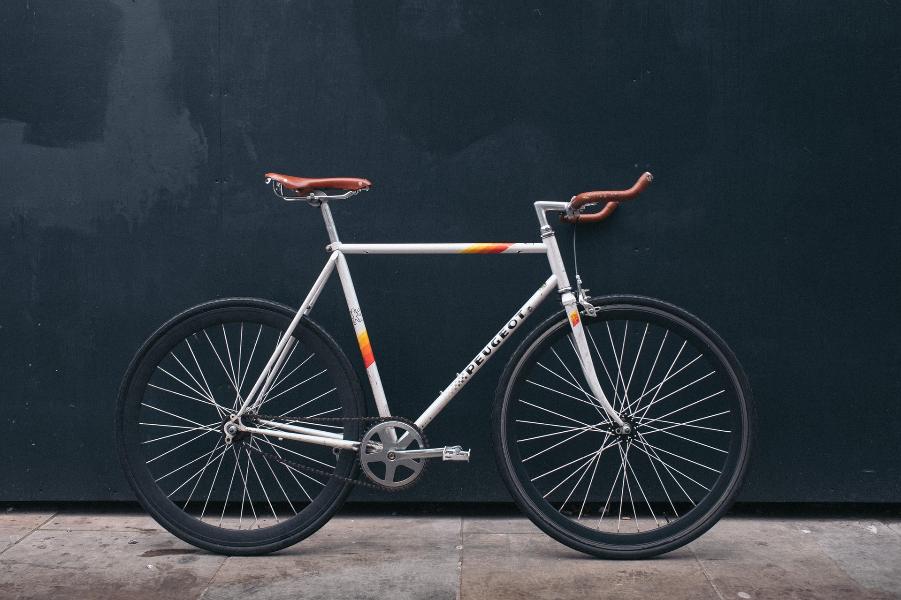
Photo Courtesy: Robert Bye/Unsplash
In Noth America, the cruiser and racer were among the most popular bicycle style. The cruiser, which was popular with hobby cyclists, had pedal-driven brakes, one gear, and balloon tires that helped with shock absorption. It was popular because of its comfort and durability.
Also in the 1950s, the racer became incredibly popular in North America. The racer, also called the sports roadster by Americans, became popular with adult cyclists that wanted an alternative to the cruiser. It was faster and better at climbing hills because of its lighter weight, narrow tires, multiple gears, and tall wheels.
There was another surge in popularity for bicycling in the 1960s thanks to interest in exercising and an attitude shift to more energy-efficient transportation sources. This led to the 1970s bicycle boom, wherein 1975, over 17 million units were sold to Americans.
Increased sales were due in part to new cyclists who preferred European style bicycles, which were called ten-speeds, sport/tourers, or sports models. These lighter models were popular with racers and cycling enthusiasts.
California and the Invention of BMX Bikes: 1970s
For a long while, the bicycle looked pretty much the same until the BMX was invented in California in the 1970s. The wheels ranged from 16 to 24-inches and were popular with teenagers because they wanted to imitate riding a motorcycle.
At the time, the Netherlands imported BMXs to race around the road, which spawned the racing documentary On Any Sunday. It credits the BMX with the motorcycle boom of the 1970s and the popularity of BMXing as a sport, rather than just a hobby.
California and the Invention of Mountain Bikes: 1970s
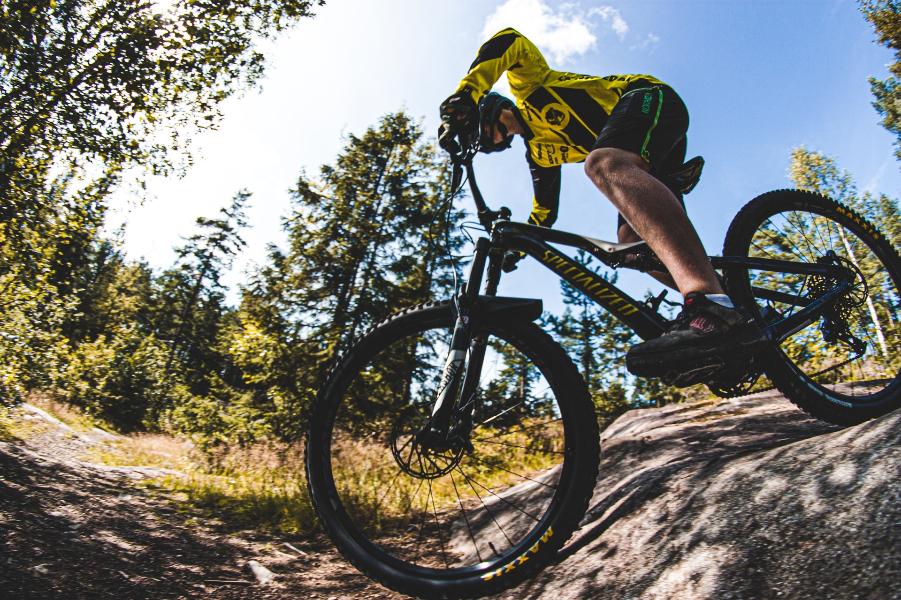
Photo Courtesy: Tobias Bjerknes/Unsplash
Another California invention, the mountain bike, first appeared in the 1970s but wasn’t mass-produced until 1981. The mountain bike’s intended use was for off-pavement or bumpy surfaces found during off-roading.
It was a quick success, as it encouraged urban dwellers to escape their surroundings and inspired other extreme sports. Mountain bikes had a more upright seating position and better front and rear suspension.
The European Bicycle Market: 1970s – 1990s
The British utility roadster was declining in popularity in the 1970s as recreational cycling became more popular. Now, lightweight bikes that weigh less than 30 pounds were the most affordable sportbike on the market and were also used for racing.
Swedish manufacturer Itera invented a bicycle made entirely out of plastic, but it failed. Instead, the U.K. switched from road-only to all-terrain bicycles. Mountain bikes were incredibly popular because of their versatility. By 1990, the roadster was practically dead.
Developments in the E-Bike Sphere: 1990s – 2000s
Unlike the traditional bike, the history of the e-bike spans only 40 combined years. Recently, e-bikes have exploded in popularity because of their lower price and accessibility. Yamaha built one of the earliest prototypes in 1989, which looks very similar to the modern e-bike.
Power controls and torque sensors were developed in the 1990s, while Vector Service Limited created and sold the very first e-bike called Zike in 1992. It included a NiCd battery that was built into the frame and included an 850 g magnet motor. However, there were barely any available, and it isn’t clear why. It may be because they were expensive to produce.
Yamaha invented the first pedal-assist system in 1993. On the other side of the world, American car icon Lee Iacocca founded EV Global motors in 1997. EV Global produced an e-bike named E-bike SX, and it was one of the earliest efforts to popularize the concept.
Bulky e-bikes at the time had lead-acid batteries, while new models adopted NiMH, NiCd, and lithium-ion. Lithium-ion was one of the most important breakthroughs in e-bike technology because it helped to increase the speed and range of the vehicle.
Modern Day E-Bikes and Their Surge in Popularity
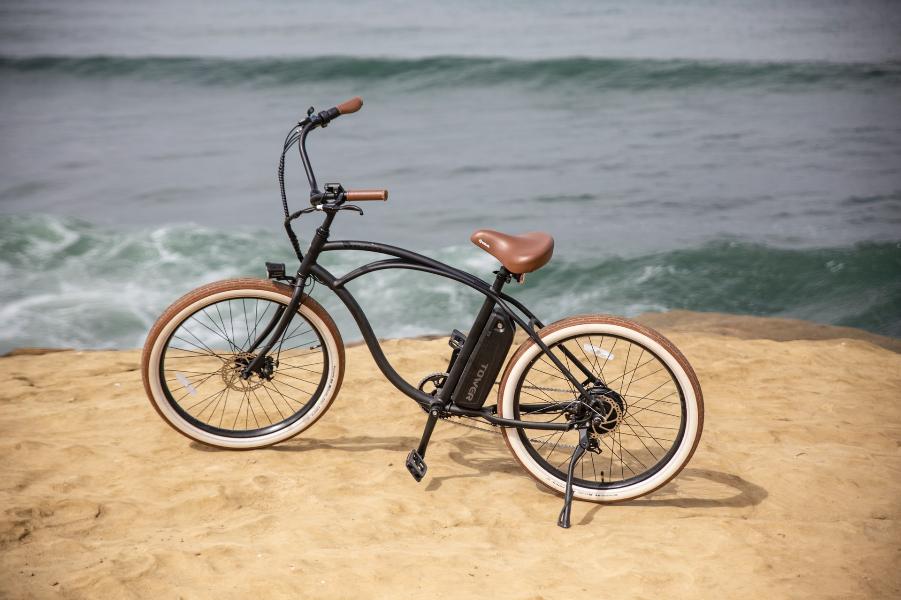
Photo Courtesy: Tower Electric Bikes/Unsplash
In 2001 electric bicycles were popular enough to have nicknames such as pedal-assisted, pedelec bikes, power bikes, and power-assisted bicycles. Now, the term e-motorbike or electric motorcycle refers to models that exceed 50 mph (80 km/h)
In 2007, e-bikes were thought to make up 10 to 20 percent of the market, while now they make up about 30%. A typical unit has an 8-hour charge battery, an average range of 15-25 miles, and can hit speeds of 20 mph (36 km/h).
There are currently multiple classes for e-bikes, including class 1, class 2, and class 3, which each determines where you can ride them and whether or not you need a license. Although this is implemented in Europe, these laws only exist in a few US states.
The Popularity of the Modern E-Bike
Since 1998, e-bike usage has seen rapid growth. China is the world’s largest producer of e-bikes, according to data from the China Bicycle Association. In 2004, China sold over 7.5 million e-bikes worldwise, which doubled from the previous year.
There are over 210 million electric bikes used daily in China, which is said to increase to 400 million in the next 10 years. In Europe, over 700,000 e-bikes were sold in 2010, but that number rose to 2 million in 2016. Now, the EU has implemented a 79.3% protective tariff on imported Chinese e-bikes to protect EU producers who seek to keep Europe as a primary market.
Are you an e-bike enthusiast?
Are you interested in many other articles, like this one, that gives an in-depth history of bicycle history?
Browse the site for more information on the best electric bikes and scooters that can make your commute more stylish and fun.
Before you go, leave a comment on what you think about the history of e-bikes and bicycles in general, or read one of our other articles about e-bikes.
The post The History of Electric Bikes and the Bicycle appeared first on eRide Guides.
]]>The post The Best Electric Bike Batteries: Everything You Need to Know appeared first on eRide Guides.
]]>Granted, you can still pedal an electric bike without a charged battery, but where’s the fun in that?
Batteries for e-bikes also have a limited shelf life, so you must have a great battery for your rides out on the road.
What are the best batteries for your electric bike?
This article will take an in-depth look at what makes up a battery, the features you should look for, and, of course, which are some of the best out there for your electric bike. Keep on reading
What Should You Look For In A Battery?
These are the terms that you will see when looking at electric bikes and batteries. The chart below breaks down what these terms mean (the actual definition and what it mainly means for the power in your e-bike).
| Term | Definition | What It Means For Your E-Bike |
| Voltage | A measure of how many individual battery cells are in a particular battery pack and how those cells are configured (or wired) together |
An e-bike motor has been specifically designed to be used with a specific voltage.
Too little volts won’t give you enough power in the motor for speed. Too many volts will burn up the electronic components in the motor. Most e-bike motors will accept either 36 or 48 volts. |
| Amps | A measure of flow at a certain pressure | The more amps that your motor on your electric bike has, the more it will be able to handle while out on the road.
Volts give your e-bike power; amps are how fast the battery can deliver the volts. |
| AH | “Amp hours” is the rating of the battery which shows the amount of charge stored in the battery |
Amp-hours affect the run time and performance of the battery for our electric bike.The higher the number, the more energy that is stored inside. |
| Watts | A unit of power; one watt is one volt multiplied by one amp |
E-bikes typically highlight their output power in watts.
More watts equal more power (speed) for your e-bike. |
| Watt-Hours | A unit of power per a specified amount of time | Basically, this is the miles per hour your electric bike will be able to travel with the watts provided in the battery. |
What Types Of Batteries Exist For Electric Bikes?
There are many different types of batteries available for purchase for your e-bike. It all depends on your personal preference for your bike, budget, and performance.
Here is a breakdown of some of the well-known batteries you can get to power your e-bike.
Lithium-ion batteries
The go-to battery for electric bikes in this day and age tend to be lithium-ion batteries. They don’t weigh too much and also pack a good amount of power in their slim builds.
Lithium-ion batteries are also low maintenance for the cyclist.
There are a few drawbacks, though. These batteries are fragile and require a protection circuit to maintain safe operation. They also tend to die after two or three years.
Sealed lead-acid batteries
Sealed lead-acid batteries have been around for over 100 years. These batteries are tolerant of overcharging by cyclists and can deliver very high currents.
These batteries are also cheap and can be easily recycled. So, if you are trying to stay within budget, this may be the battery for you.
However, there are some cons to these. These batteries are heavy and bulky and aren’t able to be charged quickly. They also don’t last as long; the typical cycle life with these is 300-500 cycles.
Lithium-ion Polymer Batteries
Lithium-ion polymer batteries are similar to regular lithium-ion in terms of cost, weight, and range.
However, these are also to be molded into different shapes. They don’t have any liquid, either, so they are resistant to overheating.
![Photo Courtesy: [Electrek.co/YouTube]](https://erideguides.com/wp-content/uploads/2020/08/screen-shot-2020-08-06-at-11-59-09-pm-1596772808487.jpg)
Photo Courtesy: [Electrek.co/YouTube]
Nickel-Cadmium Batteries
Used a lot in airlines, you will find a fast charge with nickel-cadmium batteries.
However, these also have low power density and a very high self-discharge rate.
Lithium Phosphate, Lithium Cobalt and Lithium Manganese
These three are different types of lithium batteries with other characteristics that you should know of.
Used in some high-level, more expensive electric bikes, lithium manganese batteries tend to have higher power and better range.
Lithium phosphate batteries take up a lot of weight. However, they have a greater amount of amps than other batteries and will give your electric bike more power and speed.
Lithium cobalt batteries are being produced in high numbers now also. In addition to being used in e-bikes, they are also used in other products like in Teslas and laptops.
Typically, e-bike battery manufacturers chose these over lithium phosphates because they’re lightweight and have double the watt-hours.
The Best Electric Bike Batteries Out Right Now
| Battery Name | Price | Battery Type | Voltage | Amperage | Key Features |
| Universal Power Group UB12120 Electric Bike Battery |
$54.56 | Sealed Lead Acid |
12V | 12AH | Good value for your budget
Perfect for those building their own e-bike on a limited budget Guaranteed compatibility with OEM battery |
| Joyisi 10AH Electric Bike Battery for 1000W |
$270-$300 | Lithium-ion | 48V / 36V | 10AH / 12.5AH | Lightweight design; battery is easy to install and remove
Has a convenient LED power display Includes a USB port to charge mobile and other devices Equipped with a BMS protective plate Eco-friendly materials used in the construction of the battery |
| CYCBT Lithium-ion 48V-13AH Electric Bike Battery |
$264 | Lithium-ion | 36V | 13AH | Has about 1000 charges, three times the cycle life of lead-acid batteries
Has the BMS control system for enhanced electrical protection Reportedly allows cyclists to use it in a wide range of temperatures |
| Mighty Max Baoshi Electric Bike Battery (4 Pack) |
$164.99 | Sealed Lead Acid |
12V | 22AH | Praised for its reliability and build
Includes shock absorbers and a spill-proof casing Long-lasting high performance in high and low temperatures. |
| Flying Horse ModWheel Electric Bike Battery | $349.95 | Lithium-ion | 36V | 11AH | Compatible with 250, 500, 750, and 1000-watt conversion kits
High-quality Panasonic cells At only 5 lbs, the battery is lightweight as well. Over 800 charging cycles 20 miles for a single charge Integrated USB charging port to charge your phone and other devices while you ride Secure mounting and can be locked with a simple key |
What Else Should You Look For In An E-Bike Battery?
Size, weight, and shape certainly come into play. Your battery needs to fit your bike, but it also can’t be too heavy. Otherwise, you’ll have to figure out how to mount it on the e-bike and ride around with it. And, if you have to haul a heavy battery up a flight of stairs, that won’t be good for your back.
Sustainability matters, as well. A battery for your electric bike can be expensive, depending on the specific features. You’ll want to consider reviews from customers to see what battery is more stable and reliable in the long run.
Charge cycles are another factor to consider. They are the number of times you can charge a battery to 0% to 100% in a battery’s lifetime. Each battery only has a certain amount of charge cycles (typically around 1,000 for most of today’s batteries) before they die. Most batteries can get about three years of full charges before you’ll have to replace them.
What Capacity Battery Do You Need?
The batteries on e-bikes have a variety of capacities. Since it’s the most expensive part of the bike to produce, cheaper, lightweight e-bikes tend to have smaller batteries with a smaller range of watt-hours.
Typically, it’s best to get the largest and top-quality battery, which can give you more mile range per charge. 400-500 watt-hours are becoming the norm in the industry as far as manufacturing. However, it depends on the terrain of where you live, the amount of cargo you’re carrying (including your weight).
For a normal ride by yourself on flat ground, you may consider a battery between 250-500 watts. However, if you want a faster ride or plan to carry a child’s seat or pull a trailer, you may want to consider getting more power in your battery.
The best way to know for sure is to do a test ride on a few e-bikes of different power levels to see what you are personally able to ride most comfortably. Be sure to shop in person so that you can ask a salesman questions about the power of a particular bike based on the battery.
Where Is The Battery Placed On An E-Bike?
The placement of the battery depends on multiple factors, including the shape of the bike’s frame.
Many electric city bikes have the battery mounted on the carrier rack in the rear. That works for lighter batteries on lightly loaded bikes that are made for more gentle rides. Having extra weight on a tougher ride, say in the mountains, can affect how a cyclist can handle the bike.
Electric mountain bikes typically have the battery on the down tube, which can make it easier to put the battery on and take it off.
However, e-bike manufacturers are beginning to create more frame-integrated batteries. It can look better that way and give a cyclist better handling as well.
![Photo Courtesy: [CYCBT/Amazon]](https://erideguides.com/wp-content/uploads/2020/08/screen-shot-2020-08-07-at-12-02-50-am-1596773348798.jpg)
Photo Courtesy: [CYCBT/Amazon]
How To Care For Your Battery
Of course, since the battery is what keeps your electric bike moving without putting so much work on yourself, you’ll want to take good care of it. Batteries can last three to five years, depending on how much you use it and how it is maintained.
Store The Battery At Room Temperature
You may be tempted to keep your battery out in extreme weather like during the summer or winter. However, batteries should be kept at around 60 degrees (room temperature), which the standard storing temperature for all types of batteries.
Keeping the battery out in extreme weather will affect the battery power, which affects your bike’s performance on the road. The battery, which always has a limited life anyway, will die even quicker.
Try to store the battery inside when possible.
Use The Proper Tools To Charge Your Battery
Make sure that you use the correct charging kit to charge up your battery. An inappropriate or unapproved charging device could lower the number of cycling charges.
Overcharging the battery after it has already reached full capacity can affect the number of cycling charges as well. Some electric bike experts even suggest keeping the battery charged at only 50-60%. Others say to charge it at 85% at the most.
Don’t Overwork Your Bike
Taking your e-bike at full speed constantly puts a lot of demand and stress on the motor. The motor is fueled by the battery.
The battery will quickly die if you’re always pushing your bike too hard. So, try to go a little slower while cycling out of the road. That means backing off of the turbo mode that your electric bike may have.
How To Dispose Of Your Battery When It Dies
As previously mentioned, your electric bike’s battery will eventually die. So it’s also best to know how to dispose of it properly.
No, you can’t just throw it in the trash! That’s a danger to the environment due to the risk of toxic gases being released from the battery if it gets damaged. Other ingredients in the battery, like lithium and cobalt, can lead to water pollution and other unintended consequences.
Most times, you can recycle these batteries to be reused for something else. Reach out to your local recycling centers to see if they are capable of using big batteries.
Even big companies like Apple, Target, AT&T, and Verizon have recycling plans and accept batteries from consumers. Recycling organization Call2Recycle may also be able to help.
Feel free to comment below on this article and share it with those you know who would love more facts about electric bikes!
We are so happy to share more information about these batteries and electric bikes in general on our site.
There are other great articles on the site that will help you make the right choices on choosing an e-bike and other accessories.
There are also articles that detail more about batteries, including How Fast Do Electric Bikes Go? or How Far Can An Electric Bike Go On A Single Charge?
The post The Best Electric Bike Batteries: Everything You Need to Know appeared first on eRide Guides.
]]>The post Electric Bike Safety Gear for Fashionable Riders appeared first on eRide Guides.
]]>The last thing you want is to come off and end up with an egg on your head.
With that in mind, today we will be looking at some stylish safety gear to keep you looking your best while keeping yourself in one piece!
Helmets
The number one thing you need to keep safe is a helmet. If you’re anything like me, however, you probably find that most helmets you come across look pretty dorky on their best day.
Fear not!
I’ve compiled 5 helmets that will make you look great.
#5. Smith Signal MIPS Bike Helmet
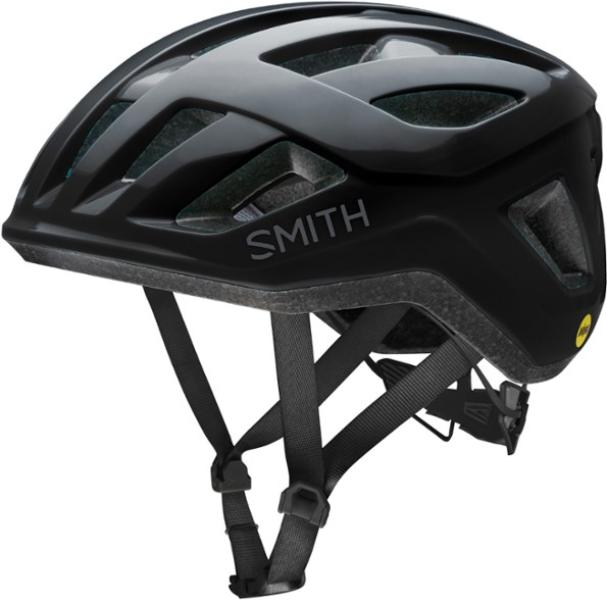
This stylish piece of headwear will keep your skull intact when you’re out on the road, but will also turn plenty of heads for all the right reasons!
Not only is it lightweight and breathable, but it also comes fitted with an easy to use adjuster wheel to make sure the helmet fits tightly on your head!
This particular helmet comes in 6 different colors, so you can match it to your e-bike, backpack, or anything else!
#4. Generies Baseball Cap Style Bike Helmet
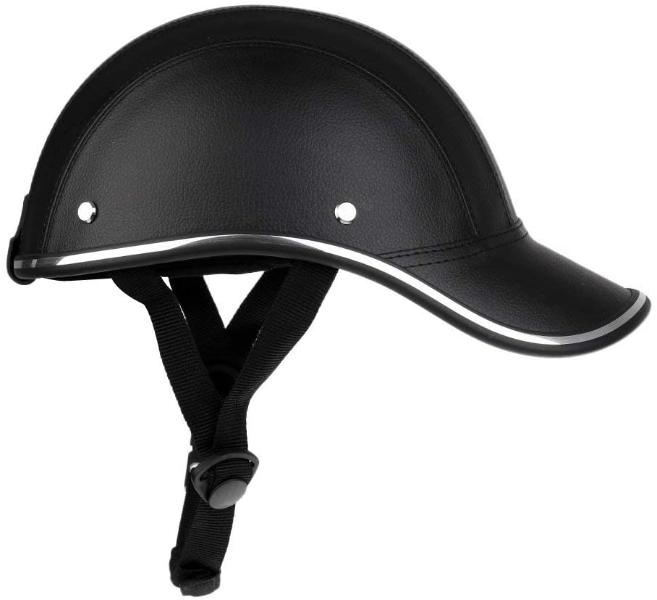
Hey, maybe you just don’t like the look of helmets all together? No biggie, this list has you covered too! What better way to disguise your helmet than making it look like a hat?
Not only will this keep your head safe, but it comes with all the benefits of wearing a regular hat as well! Do you face a grueling morning ride into the sun? Well, the brim of this helmet will do a great job of blocking the glare for you!
The black and chrome combo is a pretty nice look and it really makes this a stylish choice for anyone looking to avoid anything resembling a traditional helmet!
#3. Lazer Street Deluxe Helmet
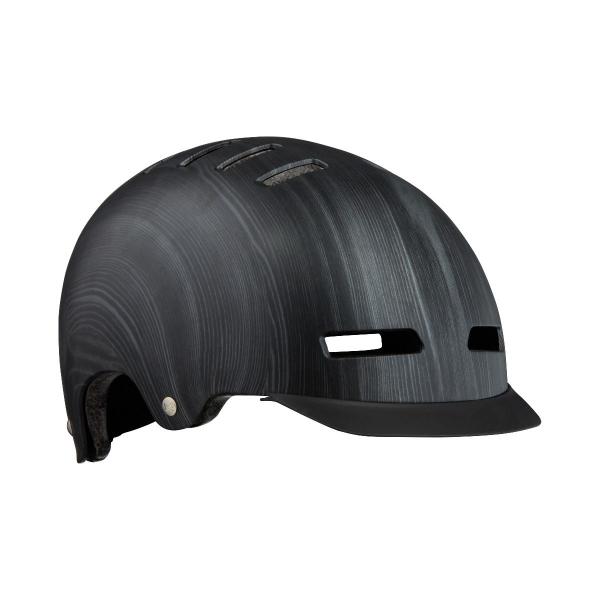
This helmet takes a more traditional approach to its design, but that doesn’t mean they skimped on features and beauty. It includes a brim just like the last design, but unlike the last one, the brim on this helmet is removable which can be very useful if you’re riding in the evening.
It has plenty of vents for breathability too, so you won’t have to worry about your head overheating if you’re riding in hot summer weather!
It has a very nice dark wood finish, which really sets this helmet apart from those like it and adds an amazing style to it that will never go out of fashion!
#2. Segway Ninebot Bike Helmet
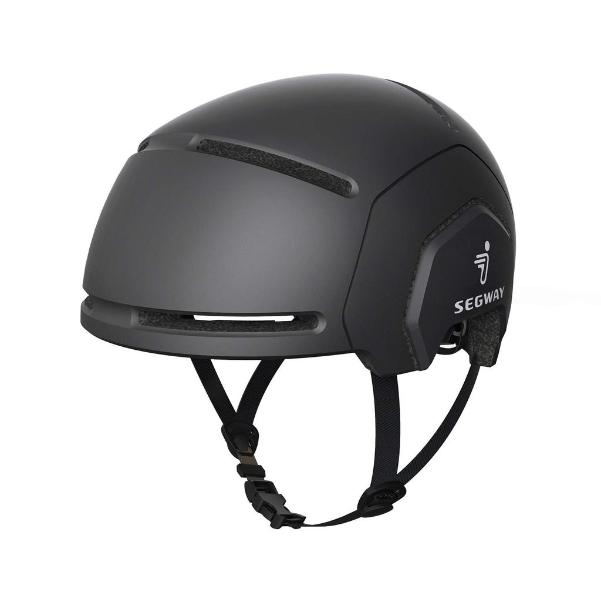
Segway has been a staple of the electric transport world for almost 20 years now, so you can be sure that their helmet will benefit from that long legacy in the field!
Stylish, breathable, and almost futuristic looking in design, this helmet brings functionality and style together and marries them together perfectly. This helmet comes with moisture wicking fabric to quickly cool your head and keep you sweat-free!
Coming in matte black, you have the added bonus of not blinding everyone who is turning to marvel at your unparalleled style on the street!
#1. Salomon Brigade+ Audio
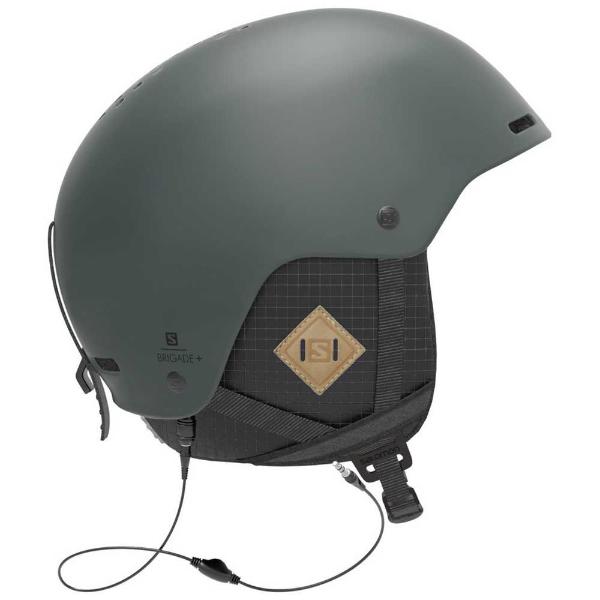
This one is a little different, as it was designed with snowboarders in mind. But don’t be deterred, because this piece of head protection is a great choice for those of us that love music just as much as our eBike!
This helmet comes with an inbuilt sound system so you can jam out on your morning commute or when you’re riding around town to relax.
It also has an adjustable vent so you can control airflow through the helmet to avoid all the nasty sweat that comes with a lot of helmets. It comes in either black or gunmetal grey to really add to the futuristic, techy aesthetic that it’s aiming for!
Gloves
Whether its the weather or falls that you’re worried about, gloves are some of the most important, and most overlooked pieces of unobtrusive safety gear.
When the temperatures drop, and it’s frigid outside, your hands will really feel the chill when you get up to speed. The same applies when it gets very hot, and the handles of your eBike feel like they’re on fire!
When you come off, your first instinct is to put your hands out to catch yourself, and the last thing you want is skinned hands and bruised knuckles when you have places to be!
This section will cover some stylish choices to protect you from falls, as well as unpleasant weather!
#5. Pearl Izumi Elite Gel Cycling Gloves

If you are in a relatively mild climate, then you might enjoy the added flexibility that these fingerless gloves offer. With comfortable, ergonomic gel padding you will be well protected without having to worry about an uncomfortable riding experience.
Another great bonus is that you’ll be able to interact with your devices when you’re stopped, without having to remove your gloves and put them back on before you go.
This has a further edge on gloves with touch screen sensitive fingers in that it is far more precise, and you can still use fingerprint biometric features.
#4. Dakine Covert Gloves
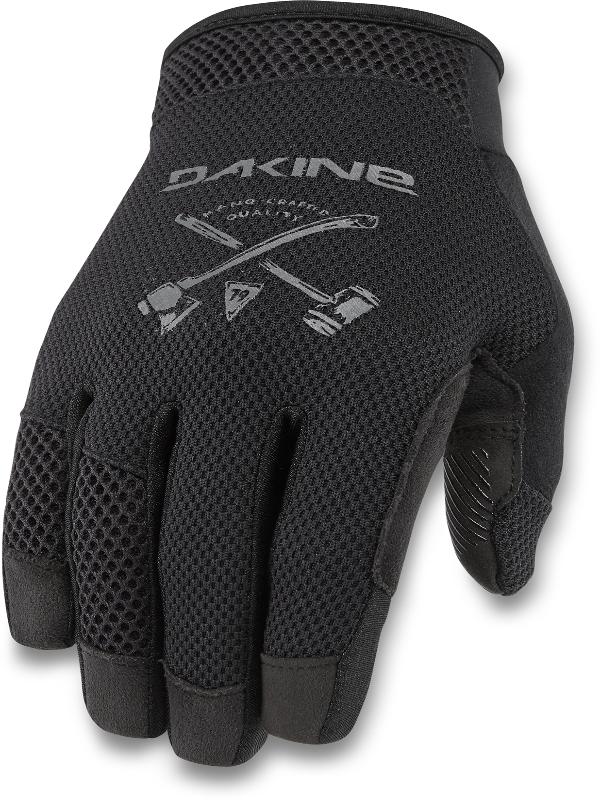
For people in a hotter climate, these gloves might be a good choice for you! These gloves are very lightweight and breathable, while at the same time offering full hand protection from falls or incredibly hot parts of your eBike!
One incredibly handy feature is the microfleece thumb panel to take care of any sweat on your brow, or the occasional runny nose.
These gloves come equipped with touch-sensitive thumbs and fingers so you can keep in touch with everyone on the go, even if you can’t use your fingerprints to unlock your phone like the previous pair!
#3. CoolChange Winter Bike Gloves
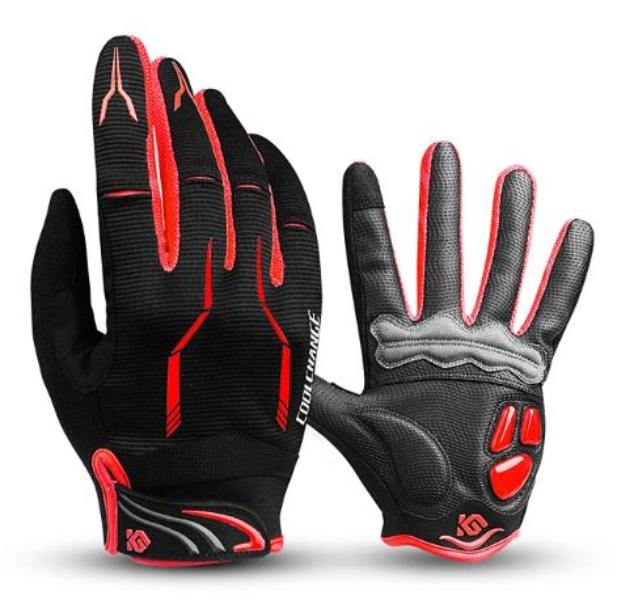
If you are in a cold climate, fear not, you are covered too! I mean, just look at these stylish gloves. They come in a few different colors, so don’t fret if red isn’t your favorite!
These gloves have plenty of gel padding to cushion your ride and your falls, and the thicker fabric will keep your fingers from freezing off in the cold winds.
These gloves also come with touch-sensitive fingers, so you won’t be forced to weather the cold when you want to check your phone during your commute!
#2. The Bird Glove v2

If leather is more your style, then this glove has you set. It’s made with soft but durable leather to ensure comfort and safety during your ride, while still looking great!
It has reinforced knuckle protection so if you do happen to come off, you’re not going to do any serious damage there. And if someone cut you off and caused the fall, the namesake and highlighted finger that gives this glove it’s namesake might come in handy!
Unfortunately, this glove is not touch-sensitive, so if you happen to get a call or text while you’re out on the road, you will have to remove the glove to take it.
#1. INBIKE Core Full Finger Gloves

These gloves are the epitome of what makes all the gloves on this list great. They’re gel-cushioned, breathable, and touch-sensitive, all wrapped up in a stylish package.
The palm has a slip-proof design, which comes in especially handy for eBikes that come with a twist throttle, and will help keep you speeding along in rain, hail, or shine!
The easy velcro seal makes putting these gloves on super easy which is always a plus, and the reflective logo will help keep you visible at night!
Other Safety Gear
There is plenty of other safety gear that you can use, though, for casual riders or commuters these items aren’t essential.
One great piece of safety equipment to invest in if you’re worried you’ll come off is a pair of knee pads. The knees are, aside from the hands, the part of your body most likely to be impacted.
#1. ZENHOX Heavey Duty Knee Pads
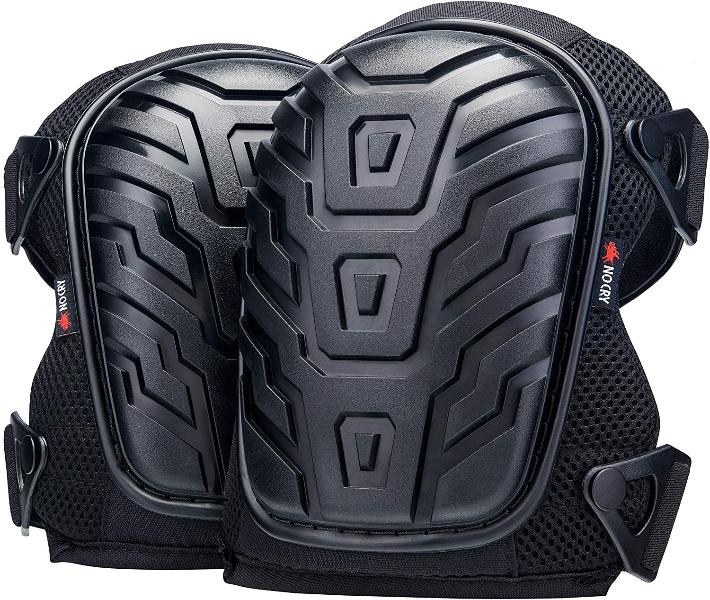
Kneepads like these are great because they are super easy to put on and take off over the top of whatever pants you’re wearing, so you’re not stuck wandering around in bulky kneepads when you get to your destination.
Another item that may not jump to mind when you’re thinking of safety gear is sunglasses.
One of the best things you can do to avoid accidents, and thus keep yourself safe is to invest in a pair of sunglasses to ensure you can see where you’re going and what obstacles are ahead on a bright day!
#2. Black Cycling Sunglasses

Glasses like these cycling glasses by Hawkers will fit neatly underneath your helmet and keep you from being blinded by glare. They also offer wrap-around lenses to protect you from peripheral light as well!
With this list, you are now equipped to keep yourself safe and stylish no matter where your eBike takes you!
If you’re looking for exactly which electric bike to pair with these fashion choices or have any questions about eBikes, take a look around the site for all the information you might need!
The post Electric Bike Safety Gear for Fashionable Riders appeared first on eRide Guides.
]]>The post Do You Have to Pedal an Electric Bike? appeared first on eRide Guides.
]]>Electric bikes function in several ways that all aim at providing the rider with assistance. They achieve this with the use of an electric motor that’s powered by a rechargeable battery.
Although the technology behind e-bikes trails back to the 1890s, there’s still a lot of confusion about what exactly they do and how they do it.
One question that’s commonly asked is, do you have to pedal an electric bike?
Yes, you still have to pedal an electric bike. The e-bike is simply a bicycle with a motor that you can regulate in assisting the pedaling effort. This means pedaling is required, but easier to do thanks to the e-bike’s motor support.
I’ve found that you don’t always have to pedal every type of electric bike. Some electric bikes only assist the pedal at a controlled rate while some rely on the throttle to attain a sustainable speed.
Some e-bikes combine the two mechanisms – pedal-assist and throttle.
The basic understanding of these different kinds of systems in e-bikes is necessary to proceed.
Let’s quickly get through them.
Different kinds of electric bikes
Electric bikes are commonly classified based on the mechanism(s) they employ to assist your riding – by pedal-assist, power-on-demand (throttle), or a combination of both devices. Let’s dive deeper into these classes of e-bikes;
Pedal-assist
These are bikes that use an electric motor for the added effort, which is regulated by pedaling. Pedal-assist e-bikes are commonly called pedelecs (from the pedal electric cycle), and they function with a sensor that monitors your pedaling force.
You’ll also find e-bikes in this category that detect pedaling speed instead to control the dispelled force from its electric motor. A regular pedelec is a bicycle with relatively low motorized assistance that withdraws once the bike gets to 25km/hr.
A variation of the pedelec is the S-Pedelec, an abbreviated form of Schnell-Pedelec, which is German for “Speedy-Pedelec.”
They are commonly classified as motorcycles or mopeds as they provide relatively high motorized assistance, even at speed above 25km/hr.
S-Pedelecs have motors that produce high electric power – up to 750 watts – as compared to regular pedelecs with a maximum continuous rated power of 250 watts.
You may be familiar with the famous saying, “with great power comes great responsibility.” Well, it applies here too.
S-Pedelecs riders in most states in the U.S are required to use helmets while carrying some form of identification or driver’s license.
Throttle Type
On the other hand, the throttle type is the kind that employs the use of a power-on-demand variety of electric motors, which is controlled by a throttle. For most e-bikes, you’ll find the throttle around the handle, just like in motorcycles.
Typically, the e-bike moves faster when you hold the throttle longer.
It’s common for the electric motors in throttle-type e-bikes to produce more power than that of S-Pedelecs. These kinds of e-bikes come in different designs, which can either include a pedal or not.
Hybrid Type
Yes, you guessed it correctly. These are the electric bikes that combine both mechanisms -Pedal-assist and throttle. This design helps batteries last longer for greater distances. Some hybrid e-bikes are designed to require pedaling even when you’re operating the throttle.
So, when is pedaling compulsory?
I’ve found through extensive research on e-bikes, that even the various kinds of electric bikes come in separately unique designs. You’ll discover some pedal-assist types of electric bikes with regulators for the level of assistance offered by the motor.
What that means is that you can control how much pedaling you want to do with or without support.
There are also hybrid type e-bikes that are made to put pedaling at priority. With this kind of e-bikes, you’ll have to pedal before getting any motorized assistance.
As regards when you need to pedal, the answer is “whenever you like,” for most e-bikes as you’ll always have the option to ride without an assist from the electric motor.
An exception, however, would be some types of electric bikes without pedals on any kind. These are commonly grouped as mopeds or motorbikes.
Some things to note
By now, you’re probably trying to piece the information together to help you decide what works best for you. For your reading pleasure, here are some things to note to get you what you need.
Specific Usefulness:
It’s a common mistake to view electric bikes as an “easy way out” of traditional cycling. This notion neglects the health and safety of many people who are in conditions that would make pedaling impossible without motorized assistance. It is especially true for old folks and people who aren’t super fit, as they wouldn’t be able to ride a bicycle otherwise.
Another primary usefulness that electric bikes provide is that they are great for people who ride roads with hills. Riding an e-bike uphill is lesser of a hassle than if done on a regular bicycle. The way a particular kind of electric bike provides the extra push depends on the mechanism it uses.
The Key Parts of the Electric Bike
The batteries are one of the significant parts of the e-bike to look out for. They’re the powerhouse of the whole operation and are usually rechargeable. They’re constituent of materials like nickel-cadmium (NiCad), lithium-ion polymer (Li-ion), and so many others.
The length of its battery life is affected by several factors. These factors include the efficiency of the electric motor, the frequency of hills driven over, and the driving electronics.
The battery capacity and weight of the rider also play a role in determining just how long the battery lasts. In case you might be asking yourself whether a more massive battery means more power, the answer is “not necessarily.”
Some e-bikes have a regenerative braking system, which is proven to elongate battery life. In such a situation, the motor would act as a generator and reduce the speed of the electric bicycle before the brake pads are activated.
However, the force produced from the reverse motion of the motor in the wheel is not near enough to fully recharge its battery.
Most electric bikes have their electric motor installed into the hub of a (back or front). The hub motor, also referred to as brushless motors, contains an arrangement of coil that uses the electricity from the battery to power a spin into the wheel.
Some e-bikes make use of a mid-driver engine instead, which accommodates more shifts to shift through than hub motors.
It’s also important to look out for the frame of the e-bike. This part is typically made from materials such as aluminum alloy. As we’ve seen, the lighter the framework of the e-bike, the longer the battery would last.
Overview of: Do You Have to Pedal an Electric Bike?
Electric bikes are bicycles with a unique feature – motorized assistance, and it’s become a worldwide sensation. It’s an energy-saving means of transportation that’s also environment-friendly.
By now, you should understand that it’s a simple misjudgment to think that e-bikes are for” lazy people who aren’t serious about cycling.”
To hold this belief is to completely disregard the people who wouldn’t be able to ride a regular bicycle without suffering any complications.
We’ve seen that it provides specific gains, such as for easy-riding uphill and helping older people and those with health conditions to enjoy cycling safely.
One more remarkable benefit of e-bikes is that they reduce the chances of sweating, especially when cycling in regular or even work clothes.
The post Do You Have to Pedal an Electric Bike? appeared first on eRide Guides.
]]>The post How To Ride an Electric Bike Safely: Everything You Need To Know appeared first on eRide Guides.
]]>According to a 2018 industry analysis, e-bike sales were up 83% between May 2017 and May 2018. These bikes will undoubtedly continue to gain traction in America as the years go on.
But, of course, safety is a significant factor to consider while riding these bikes. In fact, in a 2015 survey, 72 percent of Americans stated that was their top concern.
It’s understandable. Electric bikes are newer and do differ from traditional bikes, so it’s understandable.
So how can you stay safe while riding an electric bike?
From properly riding the bike on the road to the maintenance it requires, we’ll break down all of your safety concerns in this post before you purchase your new electric bike.
How Does An Electric Bike Compare To A Regular Bike?
If you’re making the switch, it’s important to know the differences between electric bikes and your standard bicycle to prepare yourself for a safe ride better. So let’s break it down.
Battery
Unlike traditional bikes, which simply require you to hop on and pedal, e-bikes need to be charged, typically through a wall outlet. With each charge, you can expect your bike’s battery to last between 35 to 100 miles, depending on the model.
It’s important to know your model’s charge time (and the number of charges the battery will get) so you don’t run out of juice while on the road!
Pedaling
Though there are electric bikes that are run by simply twisting a throttle (no pedaling involved but is significant wear on the battery), most electric bikes still take a bit of pedaling, though much less effort than a traditional bicycle.
With these newer bikes, cyclists can pedal and activate the electric motor with a battery-powered boost to get through tough terrain or hills without overexerting themselves.
That’s helpful when hauling cargo or going long distances!
Speed
Another major difference (which can also be a safety concern, but we’ll discuss that in a minute) is the speed. The average cyclist will go up to 9.3 mph while pedaling on a traditional bike.
However, with an electric bike, riders can move at speeds typically around 18 mph, with some models even going towards 40 mph. The motor, not the wattage, will usually determine how fast these bikes can go.
Cost
For the previous reasons mentioned, e-bikes cost more than conventional bikes. The average pricing is between $1,000-$3,000 but could cost upwards of $10,000 depending on the model of the bike. That’s in comparison to an average cost of $1,000 average for a mid-range traditional commuter bicycle. So it’s certainly an investment.
How Do You Ride An Electric Bike Correctly?
So, since these e-bikes are a bit different from the bike you learned to ride as a kid, it’s crucial to have the proper technique. You should take things slow and learn your new bike before going out on the road.
Pedal Faster
It may seem counterintuitive for an electric bike, but it’s better to pedal faster for a smoother ride, especially if you are climbing hills.
A slower pedaling rate is fine, but you will also get better battery life by pedaling faster.
Use The Eco Boost When You Can
Most e-bikes come with a switch to allow you to change the boost setting during your ride. Those settings typically range from eco (low) to turbo (high).
Though it may be tempting to use the turbo boost to go as fast as possible, riding in eco mode is safer when you’re first starting as a rider.
Riding at a lower speed will also help you save your battery. Or you can turn the electric motor off entirely and go manual.
Brake Earlier
Cyclists will need to brake a little earlier than they may anticipate avoiding collisions. e-bikes are much heavier than a traditional bike, and you are operating with a lot more speed and power.
If you wait too late to brake, you may end up hurling yourself from the saddle. To work on the correct braking technique for your bike, practice on an open stretch before riding around.
What Are The Best Safety Tips When Riding In Public?
While out on the road, it’s vital to practice safe habits as you ride your electric bike.
Always Check The Bike Before You Head Out
Charge your battery before you head out for your ride. Clean, lube, and inspect the chain on your bike regularly and make sure your brakes are working properly. Replace your brake pads and rotors when needed.
Making sure your tire pressure is at the right level is vital too. On the casing side of the tires, you will find the minimum and maximum pressure for your specific bike. Otherwise, you’ll have a pretty rough ride.
Wear Protective Gear
This may seem simple, but it’s a must. Wearing protective gear is a must. At the very least, you should wear a helmet. You will be riding at a pretty fast speed for a bike alongside other cars and pedestrians.
In case of a collision, you want to make sure your body is as protected as it can be. Trust us; you’re not too cool to be safe.
Be A Defensive Driver
Just like when you’re driving a car on the road, you need to anticipate what other drivers and pedestrians will do.
Some drivers may take a turn in front of you or come dangerously close to sideswiping you as you ride in the bike lane. Pedestrians may jaywalk across the street at any moment, and you need to be prepared to stop or move for anything.
Obey Traffic Laws
Just because you’re a cyclist doesn’t mean that you are not responsible for following traffic laws. It may very well save your life.
Cyclists sometimes forget to obey traffic lights and signs because all they’re doing is riding a bike. However, when you’re on the road with other cars, you need to follow the same rules that they do.
Otherwise, you may get into a tragic accident.
Using Warning Lights and Sounds
Something else that will be very helpful in keeping you safe with your electric bike is using warning lights and sounds.
You should install both a bell and a horn on your bike. For the record, bells are for warning pedestrians, and horns are for warning cars (no pedestrian wants to be honked at while in the zone as they walk).
Cyclists should also use a blinking front light and rear LED light on the e-bike, especially if you plan to ride at night.
Bottom line: try to stick to a lot of the same rules and protections of the road as when you’re driving.
Lock Up Your Bike In Public
If you are commuting to work or running errands, always make sure to lock your bike! Some electric bikes have a pre-installed battery lock that is easy to use.
If your model doesn’t have one, the best external lock to use is a U-Lock, which goes around the front tire to lock at a bike rack. Get as small a U-Lock as you can. If there’s not a lot of space in between the lock, thieves will struggle to break the lock with a crowbar or other tools to make off with your e-bike.
How Do You Properly Maintain Your Electric Bike?
In addition to checking your brakes and other parts of your electric bike regularly, it’s vital to be proactive about maintenance on the bike. That’s not only in regards to the life of your battery and bike but also when it comes to safety on the road.
Regularly Clean The Bike
This may seem obvious, but giving your e-bike a good clean will help to keep dirt and other particles out of the engine and potentially messing up the motor.
E-bikes should be washed once or twice a week using a low-pressure water stream or simply a wet rag. Just make sure you dray it off when you’re finished.
You can also use an air duster to clean any dirt from the e-bike’s controller and display.
Protect The Battery
The battery is vital to the life of the bike, so it’s essential to care for it as well. Store your battery at room temperature instead of really hot or really cold temperature.
This may affect the battery power and, ultimately, your ride. Just avoid taking your bike out in extreme weather conditions entirely.
Check Your Handle Bars
Every few months, check to make sure that your handlebars and stem are tight on the e-bike.
Vibrations while riding can cause the handlebars and stem to become loose. You don’t want to lose control out on the road!
Transport It Safely
If an e-bike is going to be transported by car using a bike rack, remove the battery and any other removable components. This will help make sure it’s not damaged.
Because the bike is so heavy, experts suggest using a rear-mounted bike rack instead of a roof carrier system to transport the bike on trips. Also, bring waterproof protective covers as well to protect the bike in case it does rain.
Find A Quality E-bike Shop
Having a regular maintenance schedule at a bike shop that knows how to fix e-bikes will be essential for the life of the bike. Not all shops are equipped to handle these bikes, so do some deep research into places around your area.
If you ride regularly, it’s a good idea to get a full tune-up on your bike from a qualified shop every 6-12 months. If you only ride seasonally, then bring your bike into a professional at the start or end of the season.
Be mindful, though, that if you attempt to convert a regular bike into an electric one with a kit or buy from a shop with only online service, it may be harder to find a shop to help in times of need.
And there you have it! This guide will certainly help you have a safe and comfortable ride with your electric bike.
Be sure to leave a comment below on what you think about these safety and maintenance tips! You can also read one of our other articles to help determine which electric bike may be the one for you!
The post How To Ride an Electric Bike Safely: Everything You Need To Know appeared first on eRide Guides.
]]>The post 6 of the Best Electric Bikes for Commuting to Work or School appeared first on eRide Guides.
]]>An electric bike would be ideal for long rides, where you want to stay comfortable and have a speedy trip.
The Premium electric bikes that are designed with commuters that have long trips, like to and from work, in mind are the Dost Drop electric bike and Vanmoof’s Vanmoof S3.
1. Dost Drop Electric Bike – Speed and Long Distance for a Price
Dost’s Drop electric bike is designed around traveling not only vast distances but also moving at high speeds.
The Drop electric bike is designed with commuters that have to go a considerable distance regularly. A feature that I find fantastic is the 28 MPH max speed that the Drop bike can achieve!
DOST
The Dost electric bike is perfect for longer commuters because of not only the dual batter option but also because this bike is designed for comfort. Everything from the wheels to the broad saddle to the integrated rear rack is perfect for longer rides.
The wheels are Schwalbe Super Moto X, which provide not only extra stability when riding but extra cushioning for the rougher roads.
The seat included in the Dost electric bike is a gel-filled comfort saddle which is wider to provide more comfort for longer rides.
The fantastic features that the Drop electric bike provides do come at a cost, the Drop electric bike with the single battery, which limits the distance substantially, costs $2,799 while the Drop electric bike with the dual batteries costs $3,148.
This significant price limits who will be buying this bike, but if you have that kind of extra cash and are looking for the top of the line electric bike the Drop bike is a perfect choice!
If you are looking for a premium electric bike but want to keep the cost away from the $3,000 price range, then the VanMoof S3 is another premium electric bike that commuters will enjoy!
2. VanMoof S3 – Long Distance and Security
The VanMoof S3 offers a classic design that utilizes some fantastic innovation that allows it to provide not only an excellent top speed but also the ability to ride for an extended amount of time!
While the VanMoof S3 may not offer the 120 miles per charge like the Drop electric bike, the VanMoof S3 does provide a significant amount of range of up to roughly 90 miles and has some added features that might make the VanMoof S3 look perfect for your commuter needs.
VanMoof
One unique feature that the VanMoof S3 has is that you can lock this bike through the VanMoof app. This electric bike utilizes a kick lock, which completely immobilized the rear wheel and activated the onboard alarms with just a tap of a shoe.
The VanMoof S3 also comes with remote lockdown and a smart location tracking, which are perfect for users that may just chain up their bikes on a bike rack, now even if they get the chain off, the electric bike still won’t move.
Not only can you lock this bike through the VanMoof app, but it also offers substantial customization, including changing the gear change moments to the digital bell sound the bike has.
Another fantastic feature that makes the VanMoof S3 unique is the industry-first E-shifter included in the electric bike. This electronic gear shifter makes the ride to and from work a lot smoother when compared to other electric bikes.
The VanMoof S3 is less expensive when compared to the Drop electric bike, but the VanMoof S3 still costs a fair amount being priced at $1,998. While that price definitely makes this electric bike in the more premium pricing range.
If you are looking for a more value derived bike, then either the Level Commuter Ebike or the RadRunner 1 would be ideal as both are below the $2,000 price tag.
3. Level Commuter Ebike – Smooth Ride and Up to 28 MPH
The Level Commuter Ebike is designed with the commuter in mind, not only because of the name, but also the high top speed, good average miles, and the suspension included to keep you riding for longer with little-to-no discomfort.
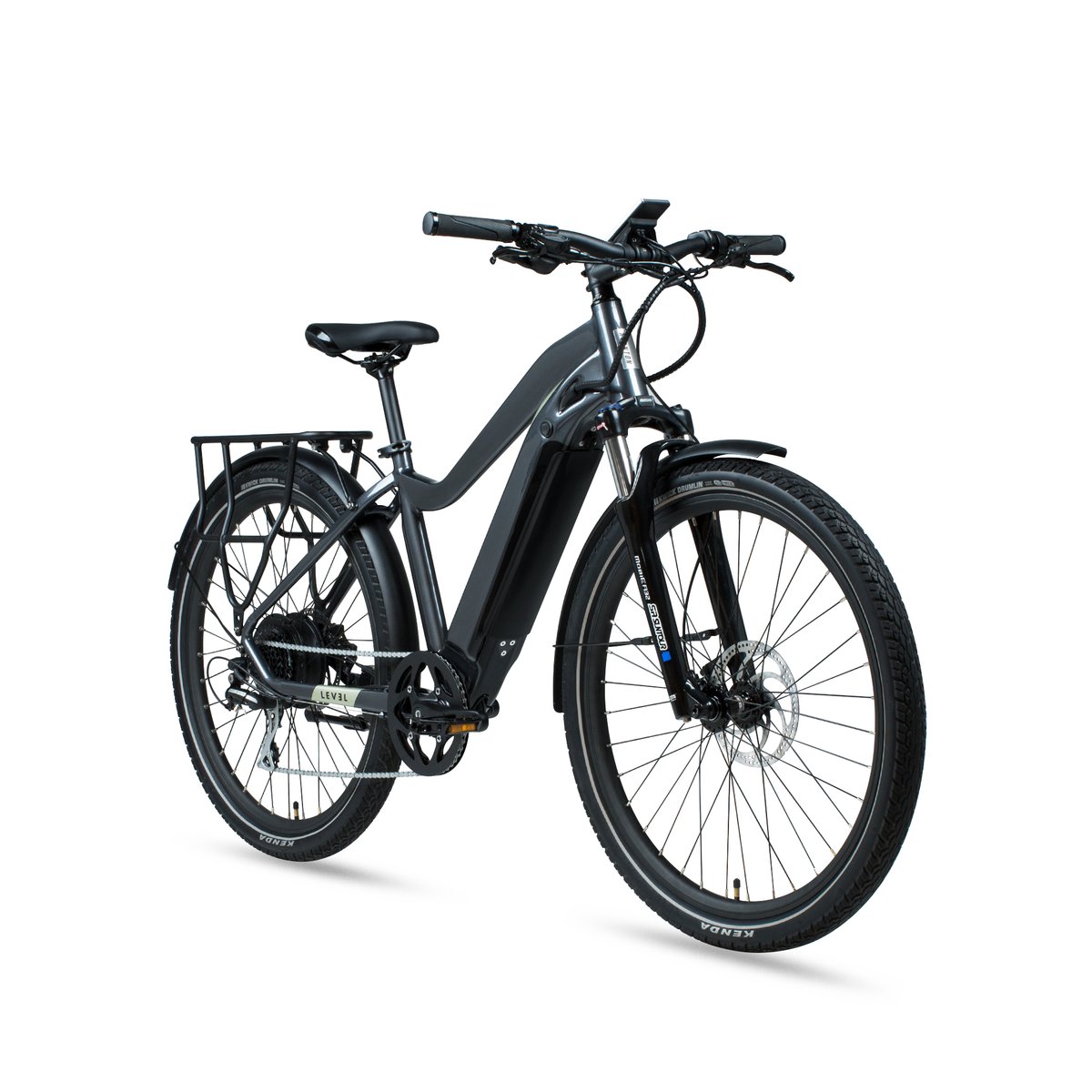
Aventon
The Level Commuter Ebike offers three different sizes. This is perfect as I am a medium for this bike while you may be a large or even a small! This eBike features a suspension fork, which has a total of 75 mm of travel.
When you want to have the smoothest possible ride, the installed suspension fork is a perfect addition to any rider!
This suspension fork is designed to keep the ride smooth for the rider, even if the road features some potholes and bumps. In addition to the suspension fork, the Level Commuter Ebike is a Class III Electric Bike, meaning that its top speed is 28 MPH when using pedal assist.
If you get tired even with the pedal-assistance, you can stop pedaling and instead let the bike do all the work for you!
The Level Commuter Ebike is less expensive when compared to the VanMoof S3, being priced at $1,599 while still offering some fantastic features for the lowered cost.
4. RadRunner 1 – Modularity So Everyone Can Enjoy
If riders are looking for modularity, then the RadRunner 1 is ideal as it offers a total of 330 accessory combinations.
The RadRunner 1 features a different design when compared to the previous eBikes, as it features a Low-Step Frame.
Rad Power Bike
For distance, RadRunner 1 offers up to 45 miles per charge, allowing even long-distance commuters to quickly get to and from work/school with little to no issue. This long-distance is powered by the 48-volts and 672 Wh, which is rated for 800 charge cycles.
RadRunner 1 features an intelligent four-level pedal assist with a low profile cadence sensor, and an intuitive LED display that quickly shows crucial information to the riders like battery charge level, pedal assist level, and a light indicator.
RadRunner 1 lowers the cost even further as it is priced at just $1,199. If you don’t want to pay in a lump sum, then this bike can be bought with Affirm, where it is $39 a month.
If you are looking for a bike that costs below $500, the next two electric bikes would be a perfect choice; these are the two bikes that even I would be able to fit underneath my college’s desk when not using them!
5. SwagTron EB5 – An eBike for City and Campus use
The SwagTron EB5 is an eBike designed for either city or campus use, as shown in the foldable design and the lower top speed when compared to other electric bikes on this list.
The high speed of the SwagTron EB5 Pro is 15.5 MPH using just the throttle and offers a range of up to 15.5 miles.
The lowered speed and lowered range are ideal for city and campus use that has the majority of locations very close, therefore, enabling this bike to last all day with little to no issue.

Swagtron
Since the EB5 comes pre-assembled, which enables you to start using the bike right after receiving it, and the foldable design allows this bike to fit into the smallest of spaces easily.
This means riders can easily use this eBike to commute to and from work.
The SwagTon EB5 is currently out of stock on Swagtron’s website. The EB5 is priced at just $499, while the MSRP for an electric bike like this is $600.
6. SwagCycle Pro Folding Electric Bike – Pedal-free and App Controlled
The least expensive electric bike that offers some robust features is the SwagCycle Pro. The Swag Cycle Pro offers not only the foldable design but is an entirely pedal-less design as well.
This pedal-less design allows this electric bike to fold up, enabling it to fit into small spaces quickly and easily.
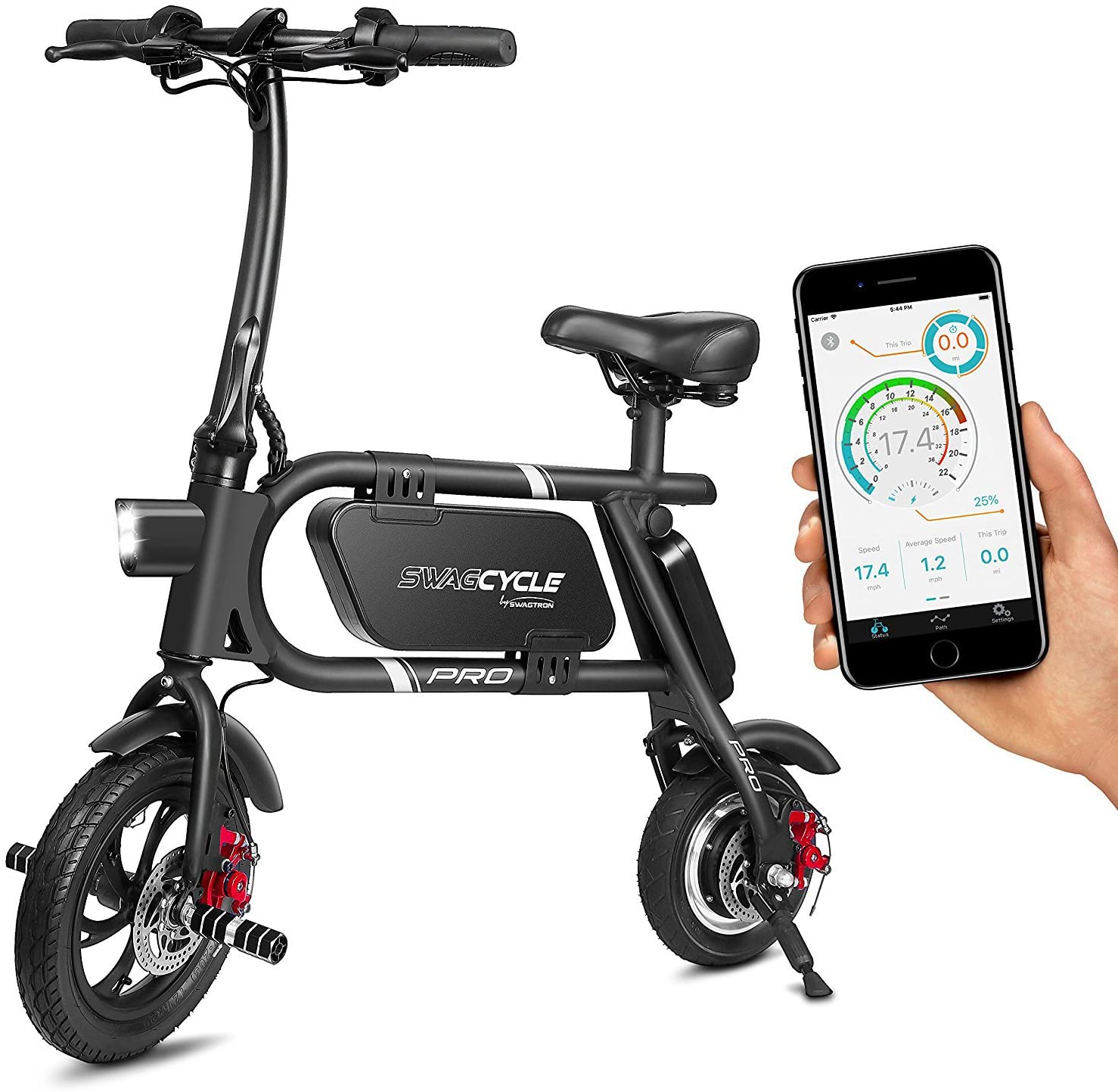
Swagtron
This bike’s sturdy frame can support up to 264 pounds and offers extreme torque enabling the eBike to feature a top speed of 18 MPH and easily tackle inclines of up to 12 degrees with its zero-emission motor.
This bike is perfect for the commuter in a large city or on campus, as the smaller tires that are featured on this bike make paved roads the ideal terrain.
This eBike has app control, which allows you to easily track your trip, speed, GPS location, and even more!
The SwagCycle Pro is currently available on Amazon for the low cost of just $399 that is significantly less expensive when looking at any of the other bikes on this list.
Electric bikes are becoming much more common, especially for commuters and college students, with that more price ranges for eBikes are becoming available.
With the higher-end electric bikes costing up to $3,000 and the budget-friendly bikes can cost just $300 or so, this means that even college students can purchase them without having to save up for the four years of college!
The post 6 of the Best Electric Bikes for Commuting to Work or School appeared first on eRide Guides.
]]>The post How Fast Do Electric Bikes Go? A Quick Guide to Battery Size and Speed appeared first on eRide Guides.
]]>Although e-bikes can help expand the sport to a new audience, there is some confusion about how fast they can actually go, and how fast is too fast.
So, how fast is an electric bike?
E-bikes have the capacity to go faster than 28 mph (45 km/h), but there are laws in place to prevent them from doing so. There are many other ways to increase the speed of a 500w e-bike, 1000w e-bike, and a 1500 bike without rigging the motor.
To ensure that you’re buying an e-bike that’s within the law, pay attention to the legislation in your country or state. Before we discuss the legality of speed, let’s examine how to get the fastest bike possible no matter your bicycle’s weight or size.
How Fast Can A E-Bike Go?
The most common questions concerning e-bikes are about their speeds. Since e-bikes have a motor, they can reach higher speeds than a pedal bike where the average cyclist can reach 12-15 km/h (7.5-9.3 mph) from pedaling using their own weight.
In Europe, an e-bike can have a maximum power of 250 watts and a maximum speed of 25 km/h (15.5 mph). E-bikes in the US can have a maximum power of 750 watts and a max speed of 32 km/h (20 mph).
Most of these speeds are reachable with assisted pedaling, but some more expensive e-bike brands will reach that speed without it.
Not all e-bikes can reach speeds of 30 km/h (18 mph) or more because its motor doesn’t support it. To determine how fast your e-bike can go, a three-class certification method was developed to properly legislate the speed to which an e-bike can have on the sidewalk or road.
Motors Assistance to Speed
The motor will almost always determine electric bicycle speed. Most people think the higher the wattage, the faster the bike, but that’s far from the truth.
Determining your motors’ assistance to speed requires you to calculate your weight versus power.
Let look at the example of a 110-pound woman who plans on biking up a hill. She won’t need a lot of power under the hood, because she is light enough to get up the hill without much peddling or throttle. 250-watts would be more than enough to suit her needs.
On the other hand, a 155-pound woman who wants to ride up a steep hill may need something better than 250-watts. If you don’t live in the United States, a cyclist that weights 155-pounds could use a 500-watt motor, but a 750-watt is ideal.
Battery Capacity and Calculating Range + Speed
| Battery + Motor (Flat Terrain 165 lbs Male) | Max Speed | Average E-Bike Cost | Average Charge Time |
| 250w | 20 mph (32.19 km/h) (G) |
$500 – $1000 | 20 minutes |
| 500w | 25 mph (40.23 km/h) (G) |
$750 – $1250 | 40 minutes |
| 750w | 28 mph (45 km/h) (G) |
$750 – $1500 | 60 minutes |
| 1000w | 35 mph (56.32 km/h) (R) |
$1000 – $1500 | 80 minutes |
| 1500w | 40 mph (64 km/h) (R) |
$1500 – $2000+ | 120 minutes |
* Green is within legal limits, red is considered illegal by many US states
Although it’s common to find batteries that range from 500w – 1500w for electronics, e-bikes battery sizes commonly come in 250w, 500w, and 750w. As lithium-ion batteries power most e-bikes, we can assume that yours will too.
Watt-hours is one way to measure the energy capacity of a bike, and calculating it is simple. To start, multiple the voltage by the amp hours of the battery back. If a battery is 36-volt with 10-ah battery pack, multiply the two (36×10=360) to get 360. Therefore, you can get up to 18 miles with a 360 watt-hour pack.
Let’s take a look at some of the most common battery fits for an e-bike:
How Fast Does a 250w Electric Bike Go?
A 250w electric bike goes approximately 20 mph (32.19 km/h) on flat ground.
How Fast Does a 500w Electric Bike Go?
A 500w electric bike goes approximately 25 mph (40.23 km/h) on flat ground.
How Fast Does a 750w Electric Bike Go?
A 750w electric bike goes approximately 28 mph (45 km/h) on flat ground.
How Fast Does a 1000w Electric Bike Go?
A 1000w electric bike goes approximately 35 mph (56.32 km/h) on flat ground.
How Fast Does a 1500w Electric Bike Go?
A 1500w electric bike goes approximately 40 mph (64 km/h) on flat ground.
Peddling
Not all e-bikes give you the option to pedal, but those that do give you more opportunities to reach top speed. Depending on your purchase, you will need a different pedaling effort, and some will assist you more than others.
If you want full assistance while riding your bike, opt for a Class 2 or 3 (more on that later), but if you’re going to work out while cycling, try the Class 1. If you do use a Class 1, you won’t be able to go as fast as Class 2 or 3 assisted.
Use a Class 2 or 3 with pedaling with the throttle on, so when you use the pedals, the e-bike will propel farther than if you completely automize your commute—biking as hard as you can make it less likely to wear you out because the e-bike will do most of the work for you.
Type of Terrain
E-bikes are separated between two types of terrain: rough trails and leisure. Most e-bikes are geared towards leisure activity because consumers use these to go to and from work. Mountain bikes are useful for rural communities where cars are expensive or inaccessible.
Rough Trails:
Like a traditional bike, e-bikes are capable of cycling up steep hills for an extended period with the proper battery and motor (750w minimum preferred). These bikes are available with hardtails or full suspension. The full suspension is better for rougher ground.

Photo Courtesy: Maxfoot / Pixabay
Leisure and City:
All e-bikes can function spectacularly on flat land or in a cityscape because they were initially designed for this purpose. To get the most out of the battery and motor, calculate your weight against the wattage of the battery. For example, a 110-pound woman can use a 250w battery to its fullest extent, while a 150-pound woman should use a 500w or more for better results.
The US Laws and the Lack of Regulation
The U.S. Consumer Product Safety Commission regulates e-bikes from a federal level to protect product safety for manufacturing at the original sale.
Without clear guidelines, many states adopted counter-productive rules governing e-bikes that treat them as an extension to human-powered bikes or motorcycles.
Some have no regulation what-so-ever, so individual states tend to suggest a 20 mph (32 km/h) max speed. This loose approach has led to multiple injuries that were easily avoidable. From 2000 to 2017, 245 million injuries occurred from electric scooters or bicycles.
The Rapid Need for Legalization of the 3-Class System
Since 2014, the national bicycle advocacy group PeopleForBikes helped over 25 states pass standardized regulation for e-bikes with the use fo the 3-Class System. This model legislation defines three standard classes of e-bikes based on wattage, speed, and operation.
Class 1 and 2 are usually allowed where traditional bicycles are allowed, but Class 3 bikes are typically reserved for road use only. In Europe, a cyclist must place a visible reflective sticker on the body to indicate an e-bike’s Class.
In 2015, California was the first of many states to adopt the 3-Class System, but since then, 26 states now define e-bikes in a Three Class structure. The graphic below outlines where states have proper legislation, which are acceptable and problematic and need work.

Photo Courtesy: Katrina Dent
Legislated states use the 3-Class System. Acceptable states have no age limit, no licensing registration, and e-bikes are treated as bicycles. Finally, problematic states treat e-bikes as motor vehicles and have confusing laws and practices that aren’t found in state law.
The 3-Class System
Here is a breakdown on which e-bikes classify for Class 1, Class 2, and Class 3 under the legislation.
- Class 1: Assists pedaling but not your throttle, these e-bikes are passive and are allowed to function on bike paths. Pedal-assist only (absolutely no throttle), and have a maximum assisted speed of 20 mph (32.19 km/h).
- Class 2: Known as low-speed throttle-assisted e-bikes. These e-bikes have motors that proper the cyclist without pedaling. The rider cannot exceed more than 20 mph (32.19 km/h) like Class 1, accept Class 2 e-bikes must be throttle-assisted.
- Class 3: Known as speed pedal-assisted electric bikes and provide assistance to the rider if they’re pedaling. Cannot have a throttle. Class 3 e-bikes can have a maximum assisted speed of 28 mph (45 km/h). However, the US only allows bikes on the road that have a maximum of 20 mph (32.19 km/h).
All e-bikes, no matter the Class, limit the motor’s power to 1 horsepower (750W).
The Dangers of Superfast E-bikes
It’s tempting to retro-fit an e-bike to go faster than 20 mph (32.19 km/h) to get from point A to B as quickly as possible. However, because there isn’t proper legislation in place in all 50 states, riding a bike that exceeds 20 mph (32.19 km/h) is dangerous for you and other pedestrians.
Superfast illegal e-bikes fall into three categories:
- Chipping/Tuning: Older e-bikes could remove the speed limiter and/or turn the wheel spokes sideways to disable it. The user would then fit a small electronic device to make it run illegally fast. While these bikes generally won’t go any faster than 28 mph (45 km/h) it’s still enough to seriously hurt or kill a person.
- Off-The-Shelf-Models: Some companies will advertise bikes that exceed speeds of 28 mph (45 km/h) even though they can’t be sold as e-bikes legally. To sell these e-bikes, companies won’t elude that bike speeds exceed legal limits.
- Retro-fit kits: Customers will buy ready-made-kits that allow them to change the motors’ top speed with the software. Legal kits are available to the public, but some or most of them can be rigged to reach illegal speeds.
While faster e-bikes have their place, it’s important to have legislation so chipping or retro-fitting vehicles are harder to access. Or as an alternative, these bicycles could be classified similarly to mopeds or motorcycles if they go much faster.
Proper legislation can effectively avoid a lot of accidents, some of which have resulted in death. In Europe, a cyclist modded a legal e-bike to exceed speeds of 28 mph (45 km/h) and killed a Hackney pedestrian.
It was the first prosecution of its kind, but many more deaths could occur is e-bikes aren’t registered, or those who use them aren’t licensed to do so.
Are you an e-bike enthusiast?
Are you interested in legislating e-bikes to maintain proper speeds in all states?
Visit PeopleForBikes for more information, and share our article to get the word out.
Before you go, leave a comment on what you think about the 3-Class System, or read one of our other articles about how to determine if an e-bike is waterproof.
The post How Fast Do Electric Bikes Go? A Quick Guide to Battery Size and Speed appeared first on eRide Guides.
]]>The post Can Electric Bikes Get Wet? appeared first on eRide Guides.
]]>However, unlike a phone, television, or game console, the likelihood of getting it wet is way less than an electric bike.
Because an e-bike has other components not found in a traditional bicycle (namely the motor and battery), there is concern that rain or melted snow will damage them.
Although most e-bike manufactures take appropriate measures to make their products resistant to water, the answer is more complicated than that.
Most electric bikes are water-resistant, and they won’t fail if they get splashed with a bit of water.
But, the amount of water an electric bike can take varies between models.
Can You Use Electric Bikes in the Rain?
Yes. Although there are no completely waterproof e-bikes on the market, and you can’t wholly submerge your bike in a lake, you can ride comfortably in a drizzle.
Due to water-resistance, e-bikes are capable of getting wet – so don’t worry about using them in rain or snow. However, you shouldn’t use them like an ATV or four-wheeler for off-roading because there is a possibility of the mud negatively affecting the motor.
There are standards in place that determine water resistance for an item. This standard of water resistance is called the “IP Rating” of a product.
IP Rating and its Function
An IP rating, also called the International Protection code, is used for mechanical castings or electrical enclosures. You’ve likely seen them on your televisions and laptops but, smartphones popularized the concept due to the frequency of consumers dropping them in water.
Samsung and Sony were the first two manufacturers that brought water-resistant phones to the market. Since then, a water-resistant function to most electronics has become standard.
IP ratings don’t just cover water. They also discuss dust resistance and solid object protection, as well as accidental contact with other electronics.
To better understand IP ratings and the numbers attached to them, look at the chart below.
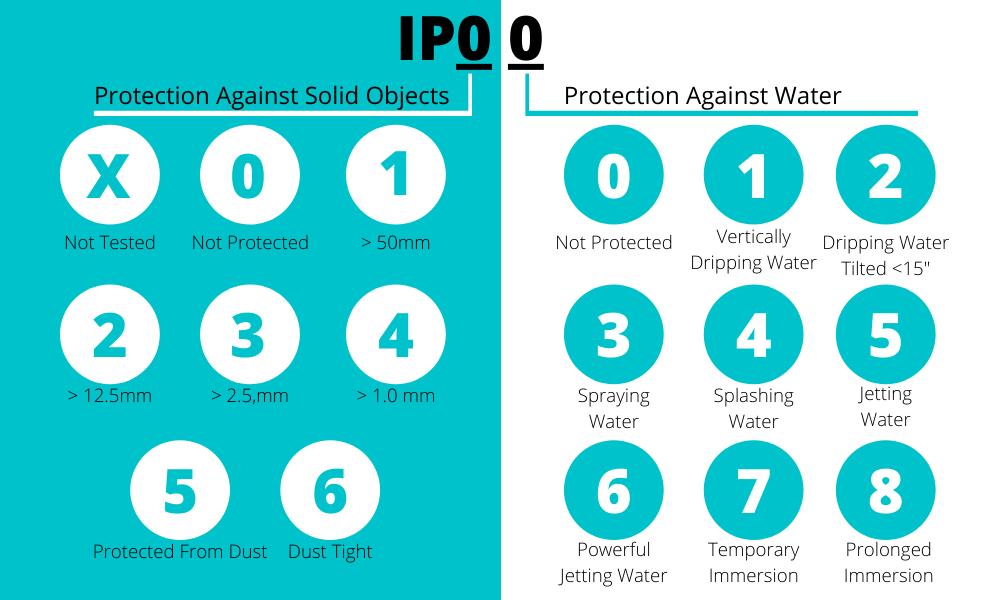
Photo Courtesy: Katrina Dent
When browzing for e-bikes, you’ll likely find bikes certified for IPX4 or IPX5. Looking at the chart, we can determine that the product is suitable for splashing water (4) or jetting water (5).
At both of these ratings, you can ride your e-bike in the rain without suffering permanent damage.
Just don’t get caught in a monsoon. Otherwise, you may as well throw your bike in the lake!
Tips for Riding Your E-bike in the Rain
The best thing to do to prevent rain from seeping into your motor is to prepare ahead of time. Use these tips to ensure your e-bike stays in working order for years to come.
Waterproof Yourself
There’s nothing worse than arriving at your destination all sweaty – that’s what e-bikes are for! But what if your clothes are wet because of the rain? To protect your garments and your wheels, invest in some waterproof clothing.
Invest in a cycling hat to protect your head from the water and falls. Make sure it can fit under your helmet, and also has a brim and ear flaps to save your ears from potential infection.
Gloves are essential, so keep an extra pair in your waterproof backpack. Balance your dressing with a rain-resistant jacket and coat, but don’t layer too much or you’re bound to get hot.
Even with a closed bag fit for rainy days, I like to be on the safe side and add a blanket to wrap around my electronics. For small electronics like phones or hard drives, use a Ziploc bag or a nylon shoulder strap for extra protection.
Apply Fenders
The drivetrain on your typical e-bike is capable of surviving little splashes of water, and the batteries can work in multiple weather conditions. However, the factory safety features often don’t protect from a large amount of debris.
Use a fender to protect your bike from water, mud, and debris. It’s preferable to buy one made of metal for physical debris, but plastic is ideal for spraying water.
Reduce Tire Pressure

Photo Courtesy: Nikita Lyamkin/Pexel
You’ll want excellent traction on rainy days because even on the freshly paved pavement, your tires are more likely to roll too fast. 100 psi is standard, but for slippery conditions, it’s better to reduce tire pressure to 10 psi or less to improve traction.
At 90 psi, your tires will have a better grip on the road, which will help prevent falling and avoid hydroplaning on ice.
Slow Down
When a road has too much water and ice, slow the heck down! As much as slamming through puddles on the street and sidewalk can be fun, it’s better to slow down to avoid accidents and to give yourself more time to brake.
Lousy visibility is bad news in a vehicle, but on a bike, there is a possibility of flying off onto the road if you hit something or can’t stop. Get an e-bike with a pedal-assist capable of maintaining high speeds, even in harsh weather conditions, so your bicycle can compensate for the weather.
For better braking power, opt for disk brakes instead of rim brakes. Rim brakes are commonly found in traditional bicycles and only perform well in dry conditions.
Use Your Lights
We already spoke about how visibility is an issue in cloudy weather. However, although seeing other vehicles on the road is vital for your own sake, you also need others to see you amidst the rain and snow.
Most countries with e-bike laws, including the United States, require you to have front and rear lights. Still, lights may not be enough. Install reflection signs on the front, sides, and rear on your e-bike, or wear a reflective vest to keep you and other drivers safe.
Don’t Lean
Although an e-bike functions similar to a traditional one – it’s a lot heavier. Think of your e-bike like a motorcycle and don’t lean too much on its sides on a turn.
You can get away with leaning on a BMX or equivalent, but an e-bike could collapse when turning a tight corner.
Instead, apply the brakes slowly, or pump the brakes as you would if you hit an ice patch. These methods will keep your tires on the road, which will maintain traction can keep the bike balanced.
What to do During Unexpected Heavy Rainfall

Photo Courtesy: Genaro Servín/Pexel
Sometimes rain can disrupt our day. Although you can prevent damage from occurring to your battery or motor during a light drizzle, a massive downpour or an inexperienced rider should consider the following tips.
Avoid Excess Rain
You’re probably saying “duh,” but your e-bike really can’t take a downpour or 10 minutes or longer of consistent rain. Use your judgment, but if you’re getting soaked within minutes, you should find cover immediately and wait out the storm.
Most e-bikes are $700 or more, so it’s in your best interest to protect your investment. Extend your commute by a few minutes or call an Uber if your bike is smaller than 40 inches (anything bigger won’t fit in their vehicles). If you’re really late, it’s better to take a bus instead of running your bicycle or other electronics.
Wipe Bike Components
When you finish your ride and your bike is in a safe place, don’t ever let your bike dry on its own. I repeat: don’t let your e-bike dry on its own. Water and ice will seep into the motor and battery and leave long-lasting damage if left to its own devices.
To start, don’t use extra water or soap to wipe down your bike initially. Although your e-bike is probably dirty, it’s not a good idea to add extra moisture when it’s already wet. Use a dry cloth to remove the excess water on all external components first.
After you’ve removed water from the top layer, open up the hood and inspect if any water is inside. If there is, carefully remove the motor and battery and pat the outside gently.
After the bike has dried overnight, you can wash off the dirt and debris with a sponge. Never use a pressure washer, because you could move the dirt to more sensitive areas of the bike.
Store Appropriately
If you typically store your bike outside, consider relocating it during harsh weather – especially if you’re trying to dry the components after a storm. Snow, sleet, and rain can potentially damage your bike, even if humidity dews on its gears and chains.
Think about it this way: you would never leave your other electronics outside, even in the best conditions. If you have a garage, store it inside. When all else fails, park it in your mudroom if you have one, or in your house.
Find a Bike Fit for Your Climate
Some e-bikes will suit your climate better than others. If you live in an environment with few rainy days like California or the dry deserts of Arizona, you can get away with an IPX3. However, opt for an IPX5 if you live in New York, so your e-bike has a higher chance of working after an unexpected thunderstorm.
A higher IP rating is always better, but they come at a price. Make sure to read the user manual carefully for every e-bike to ensure it will hold up against snow, sleet, and rainfall.
The post Can Electric Bikes Get Wet? appeared first on eRide Guides.
]]>